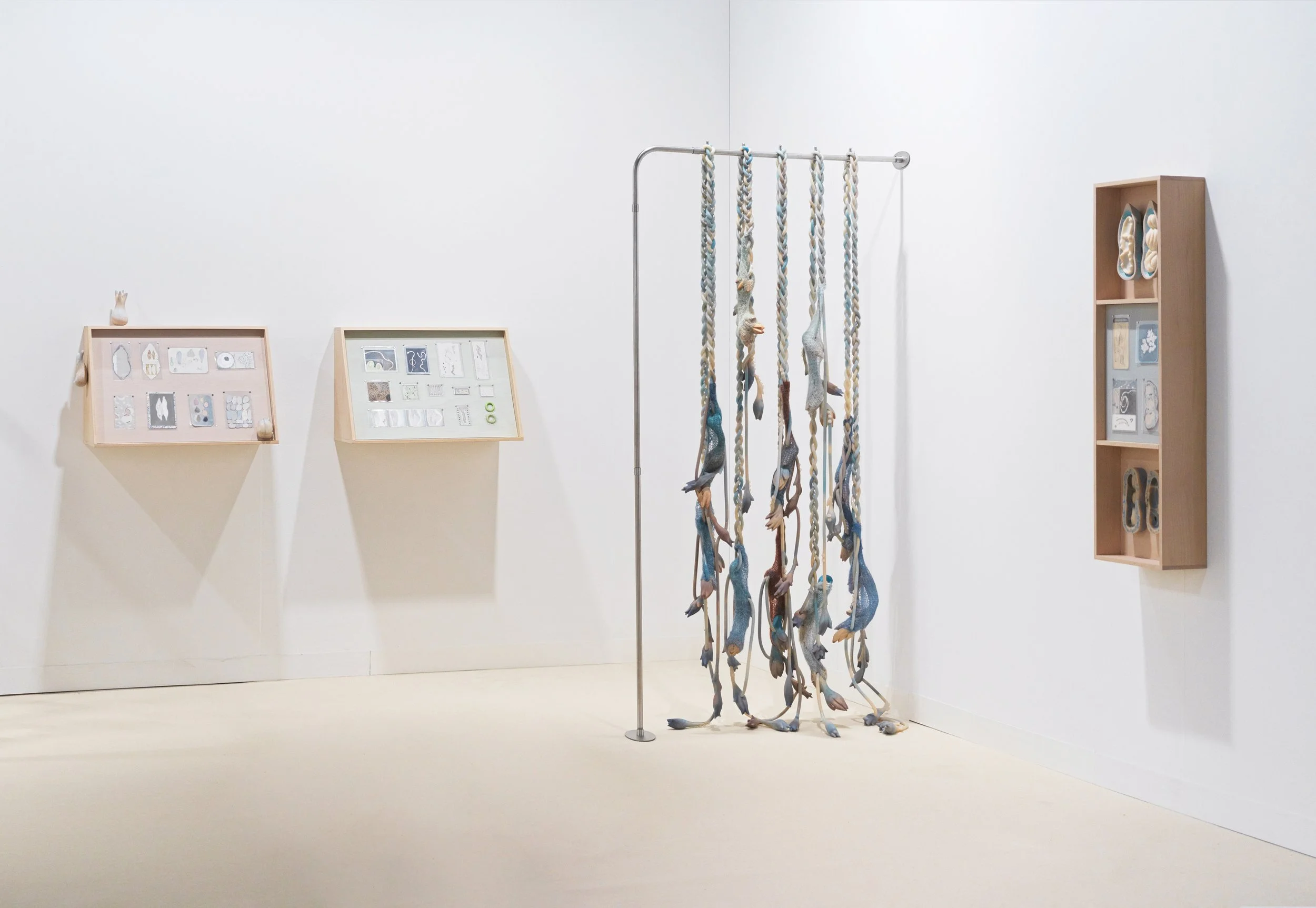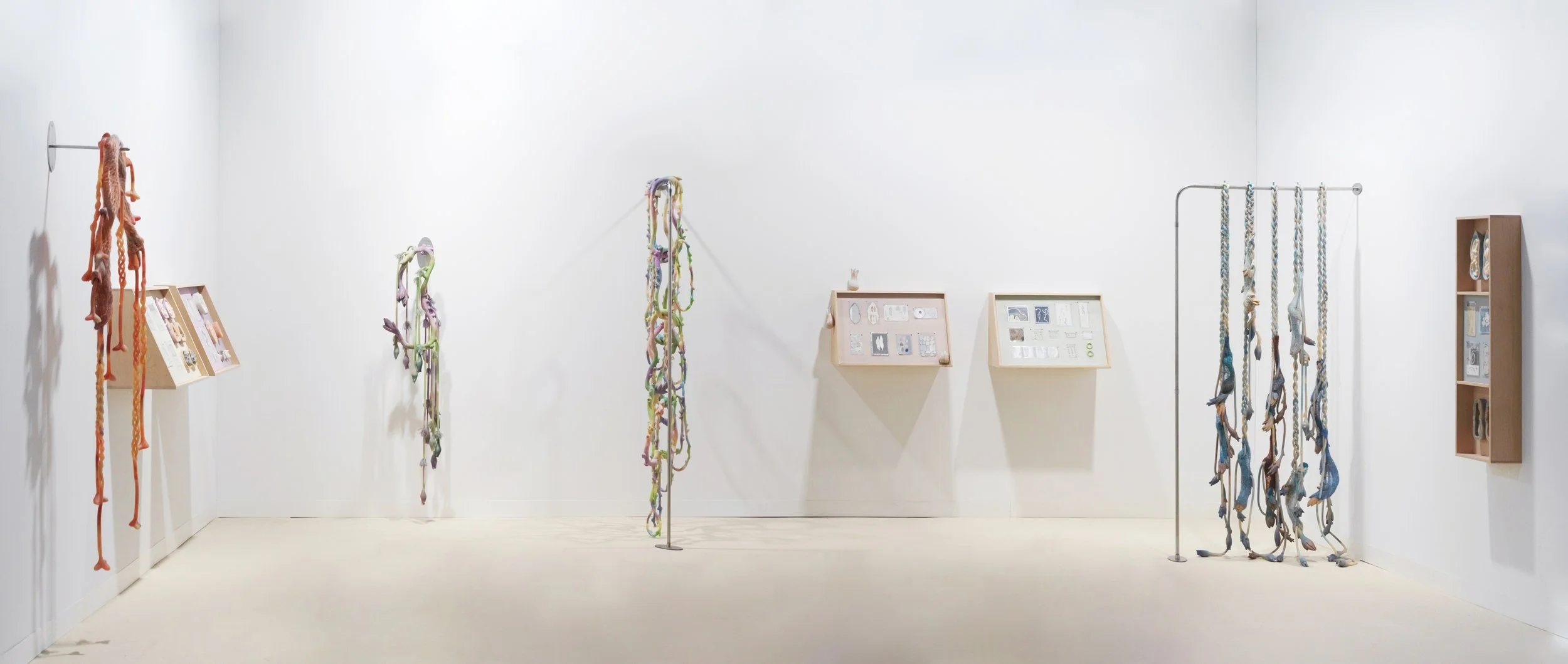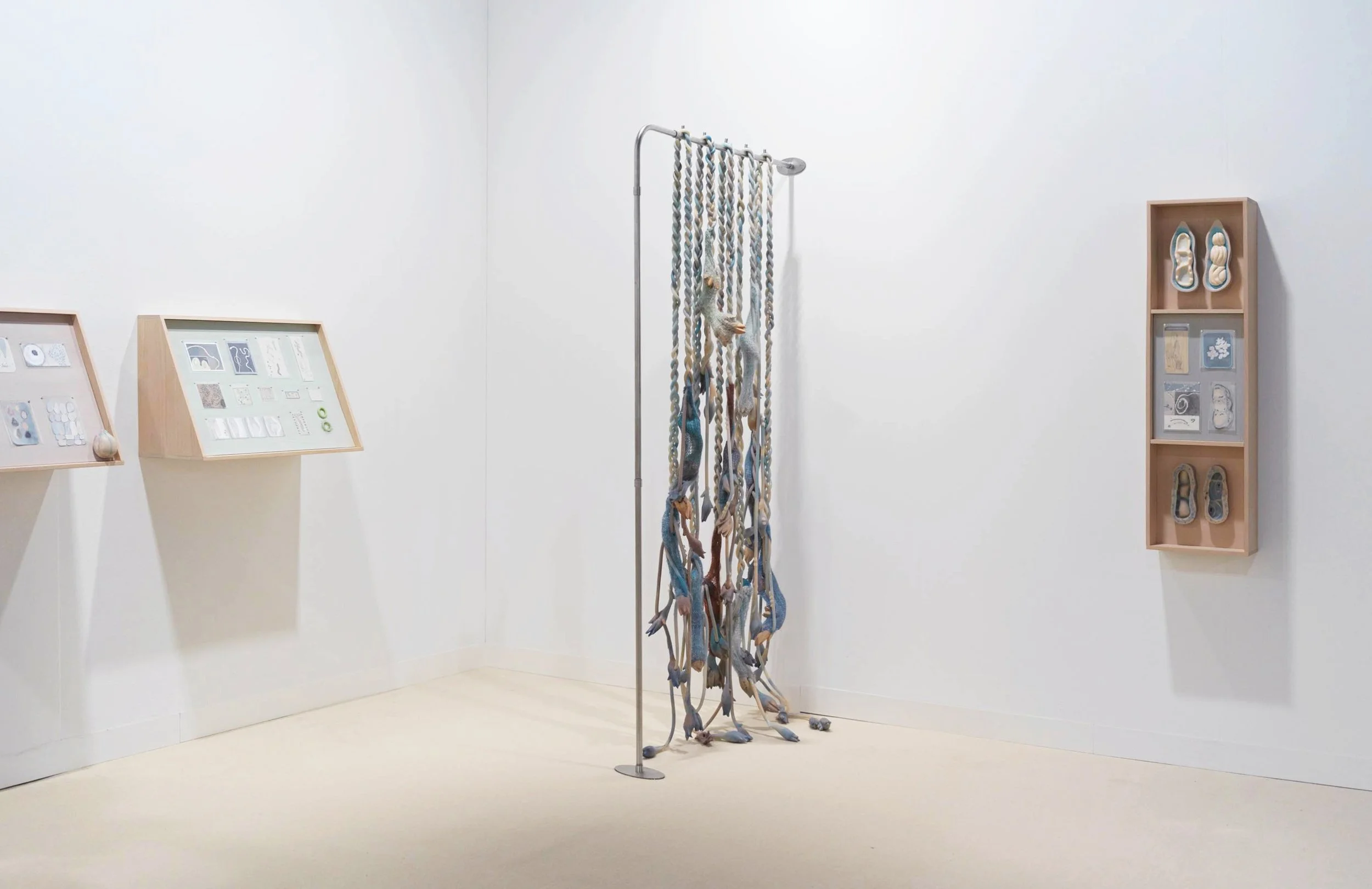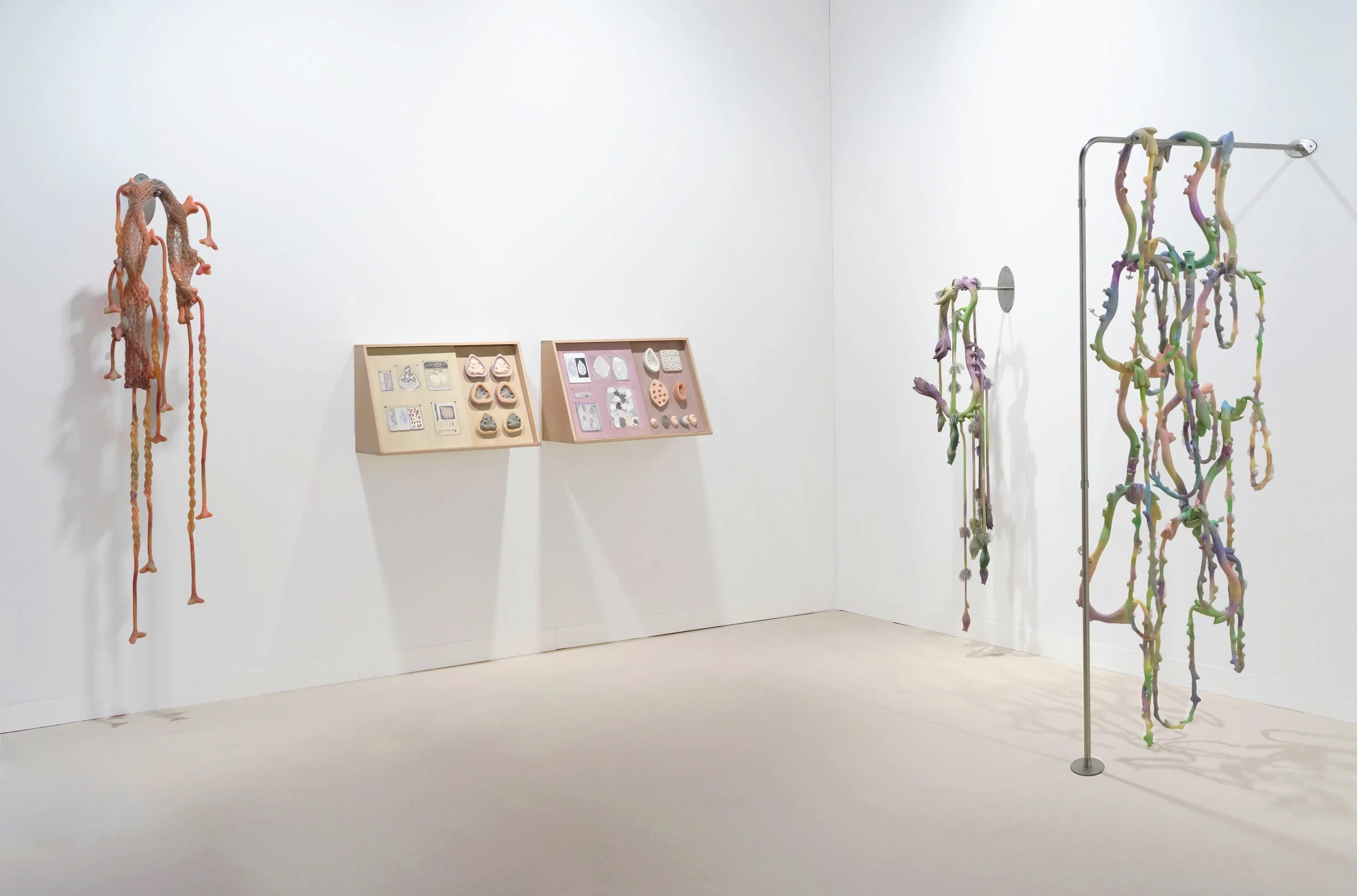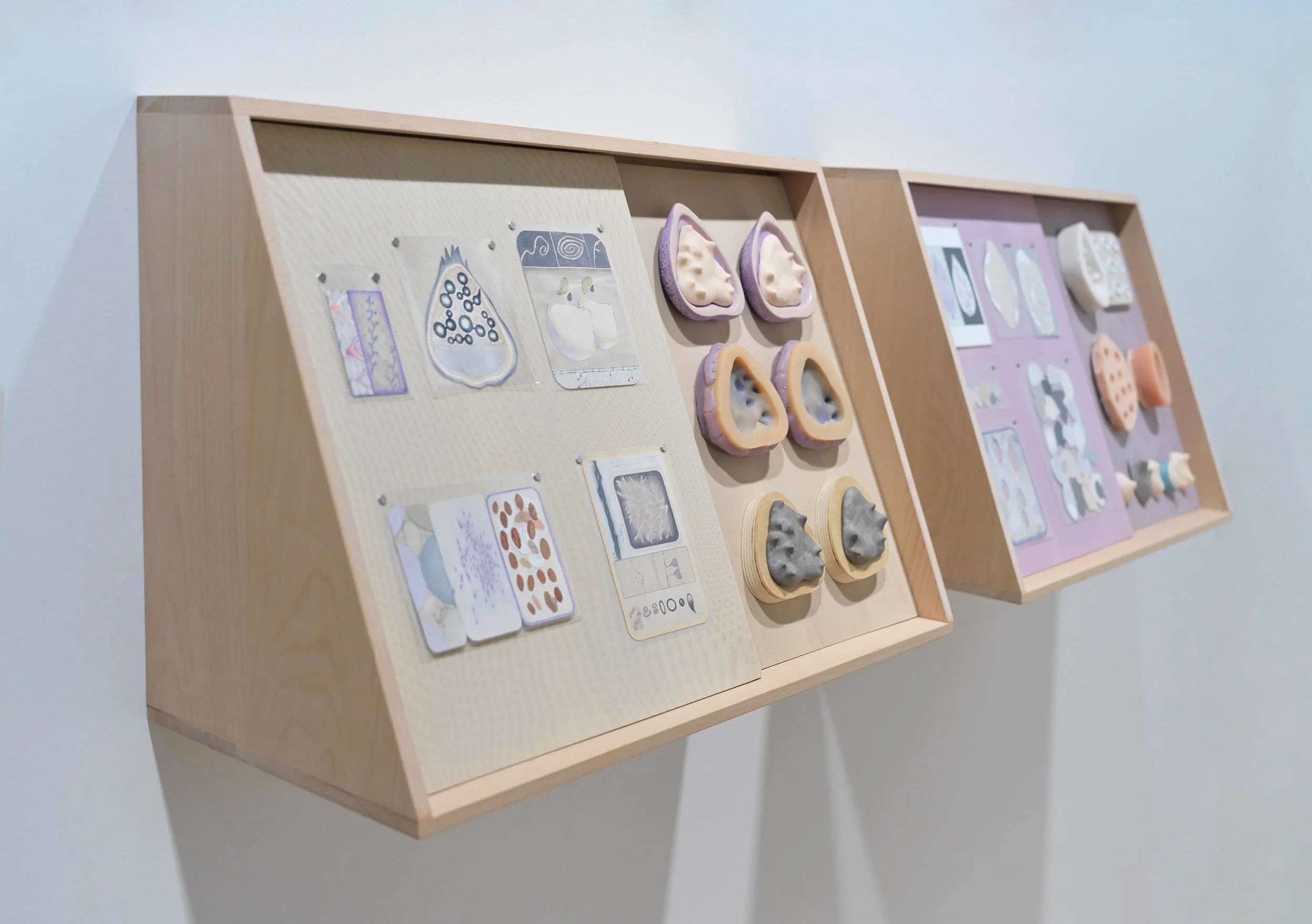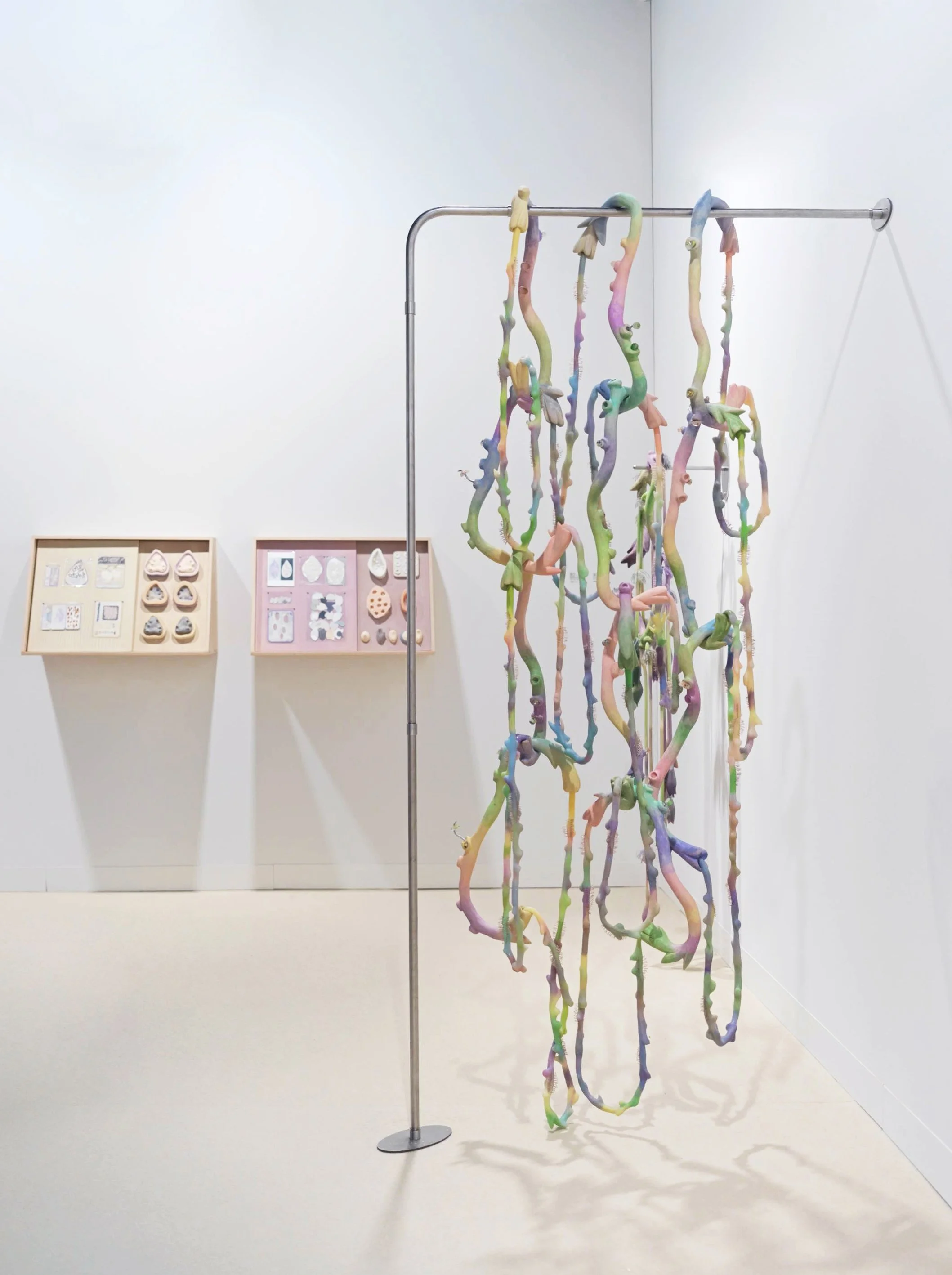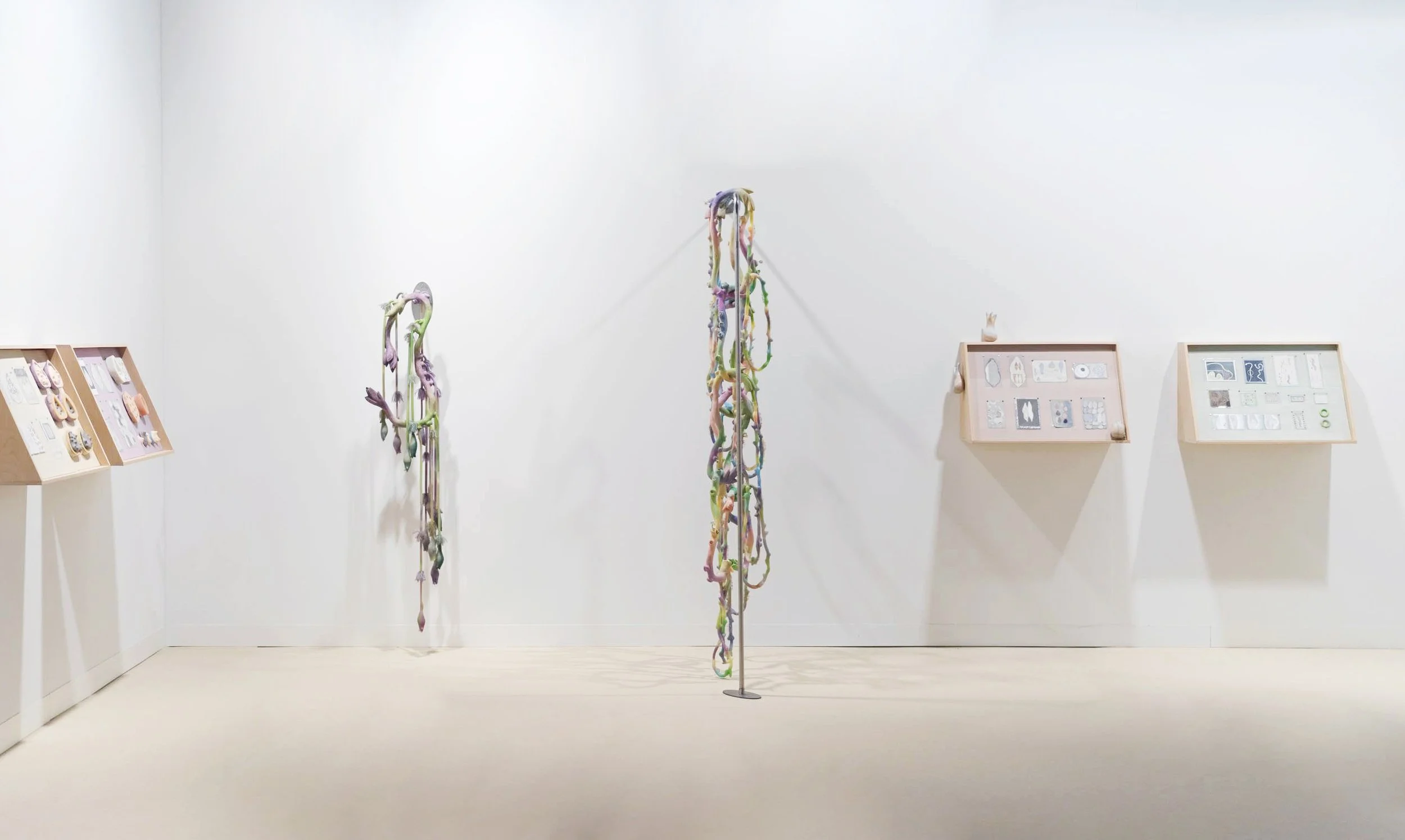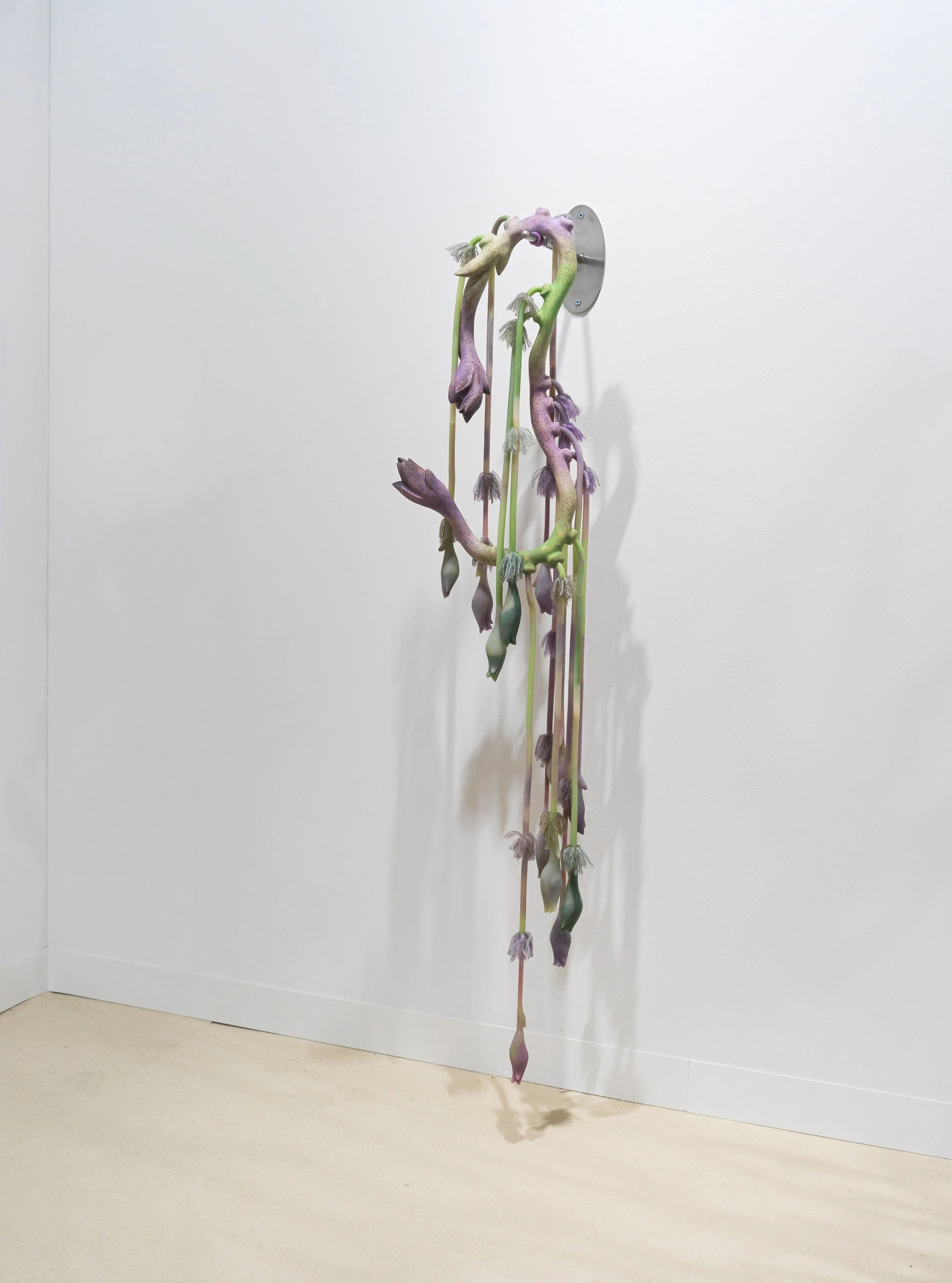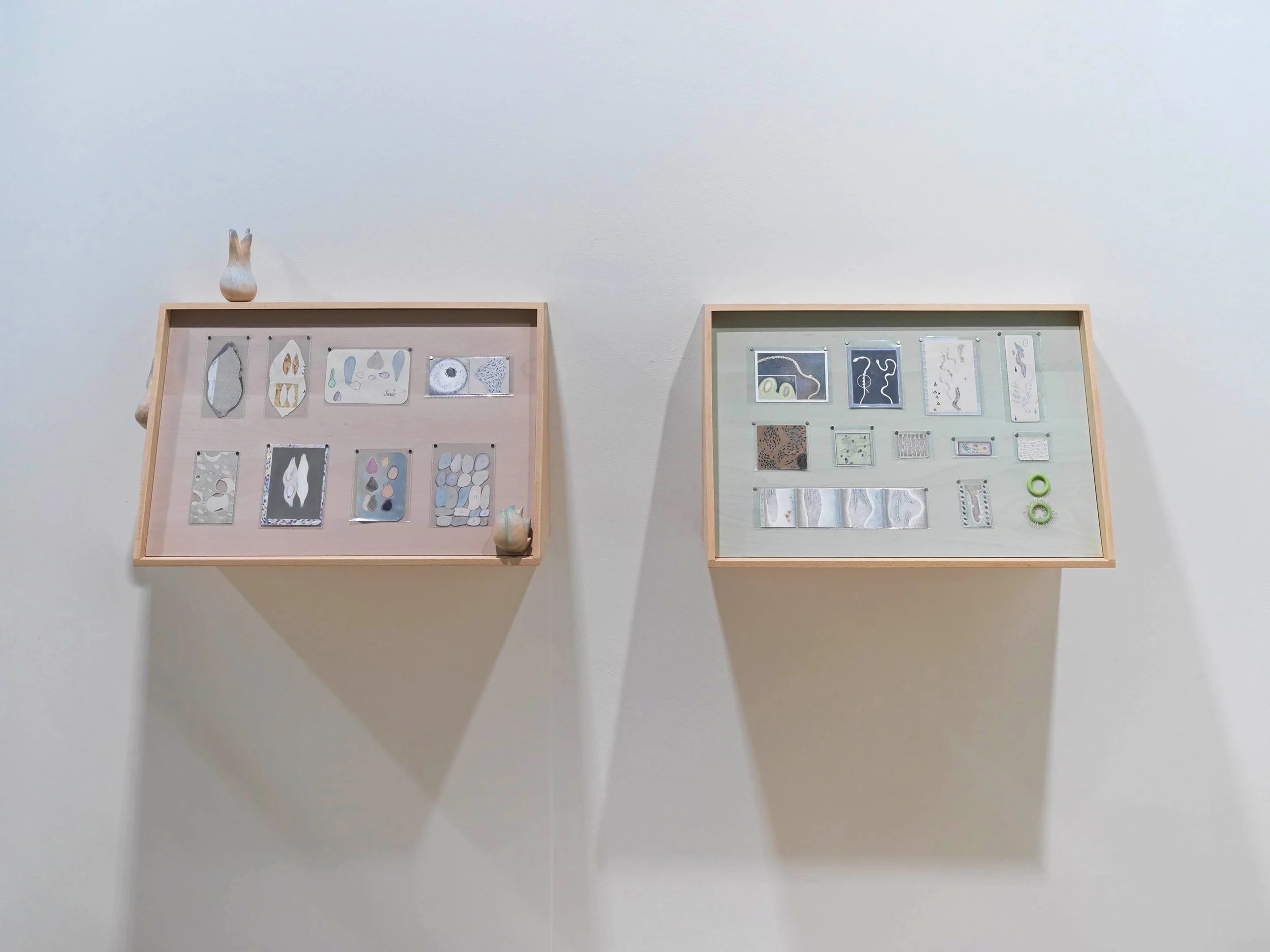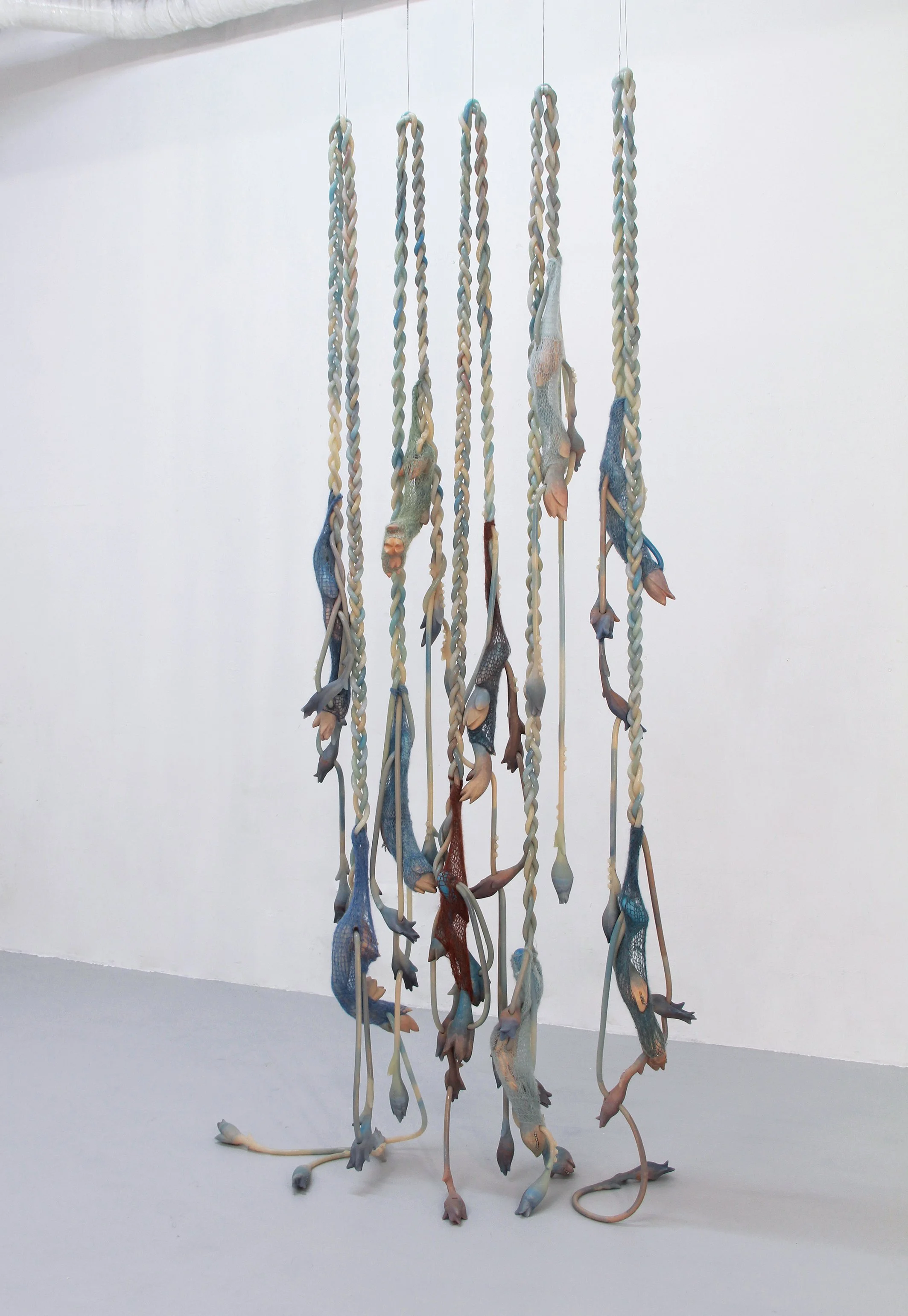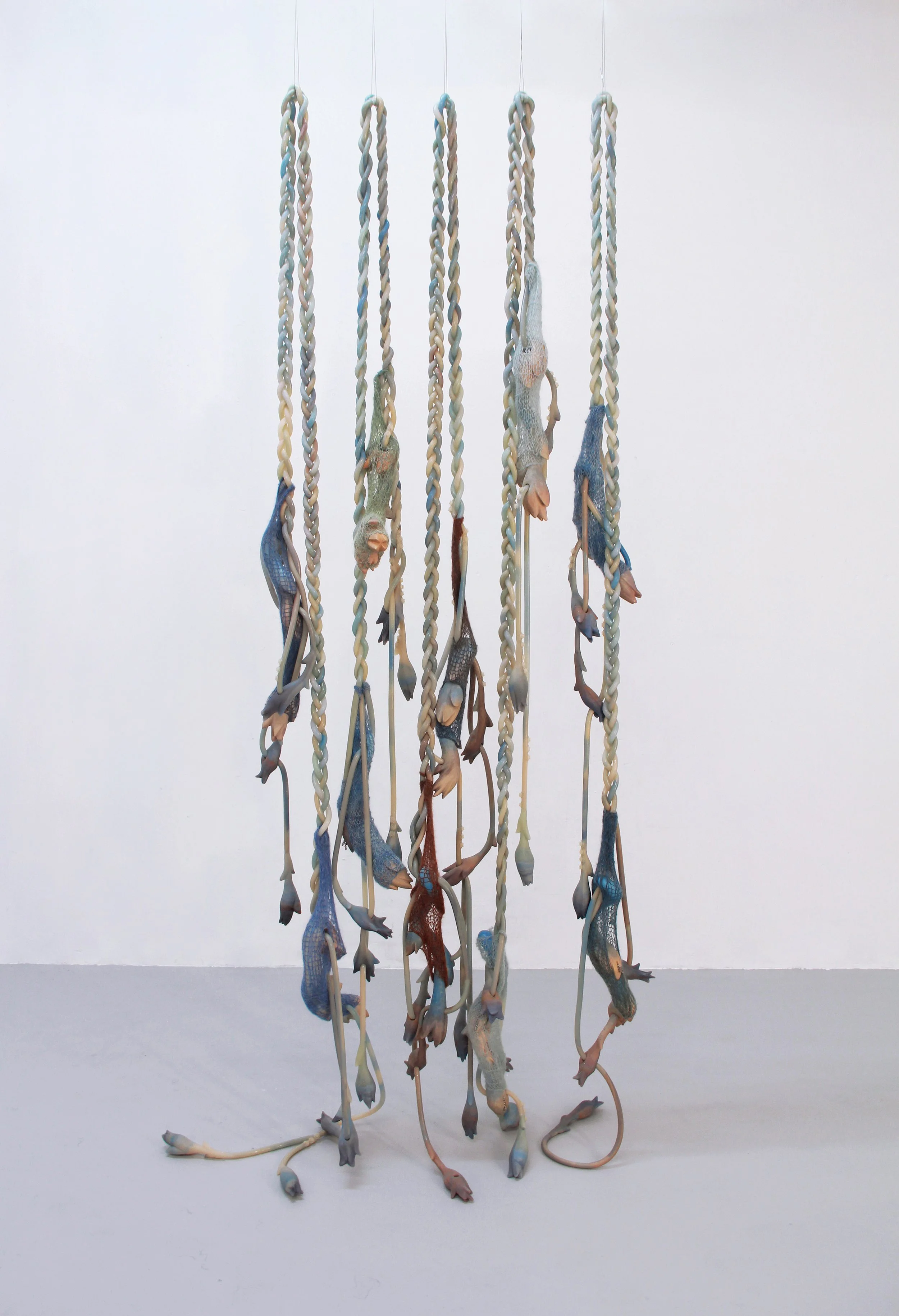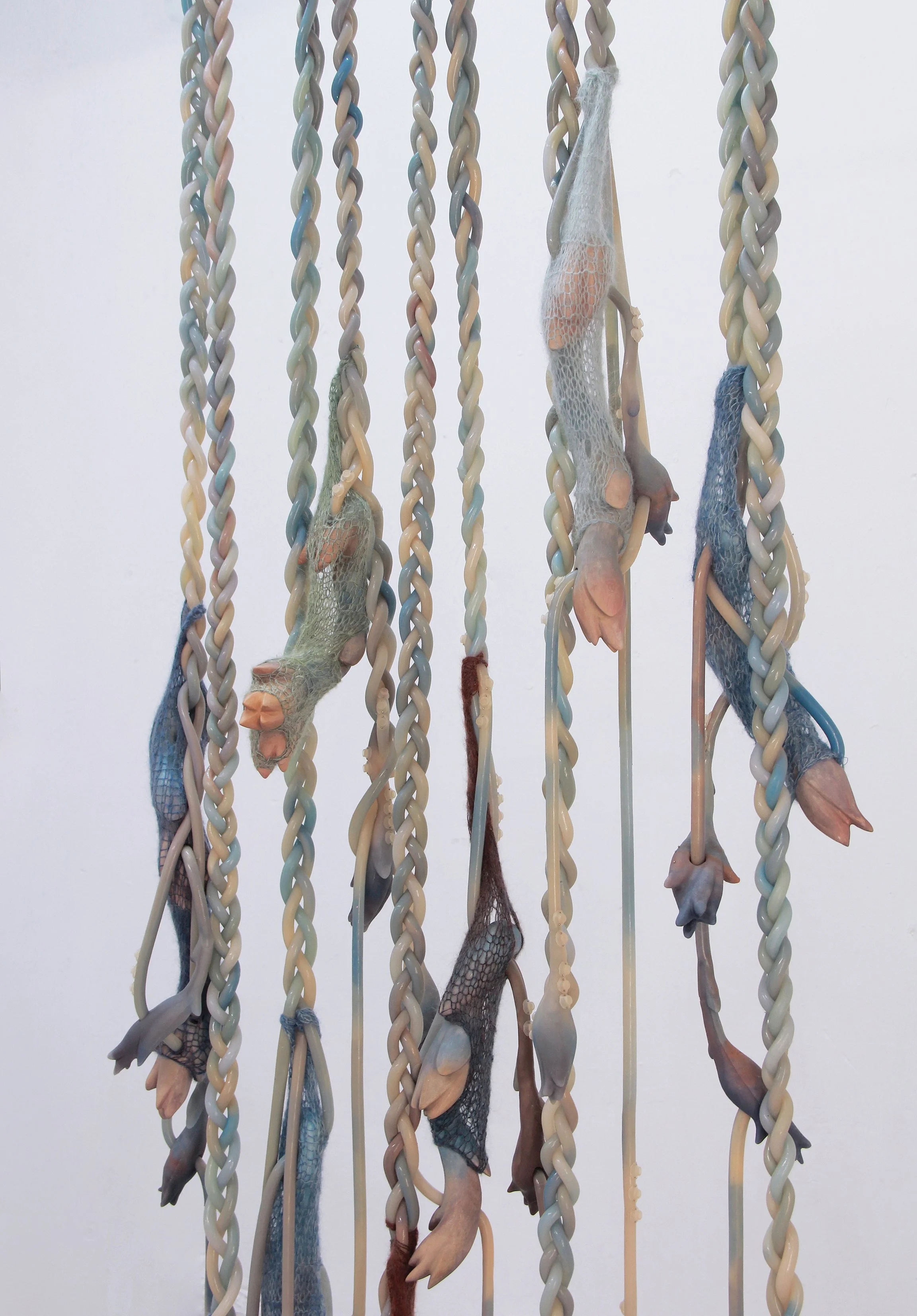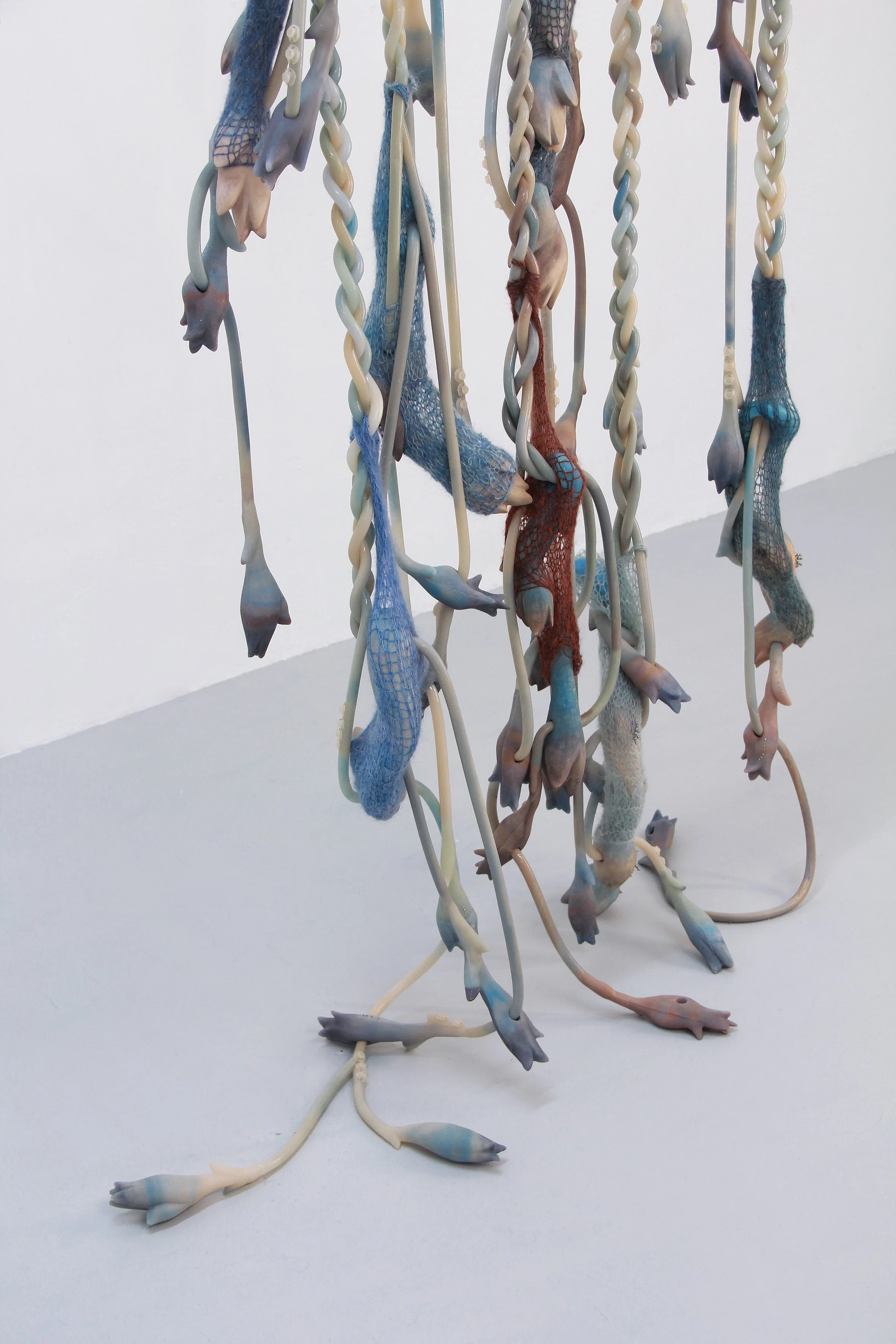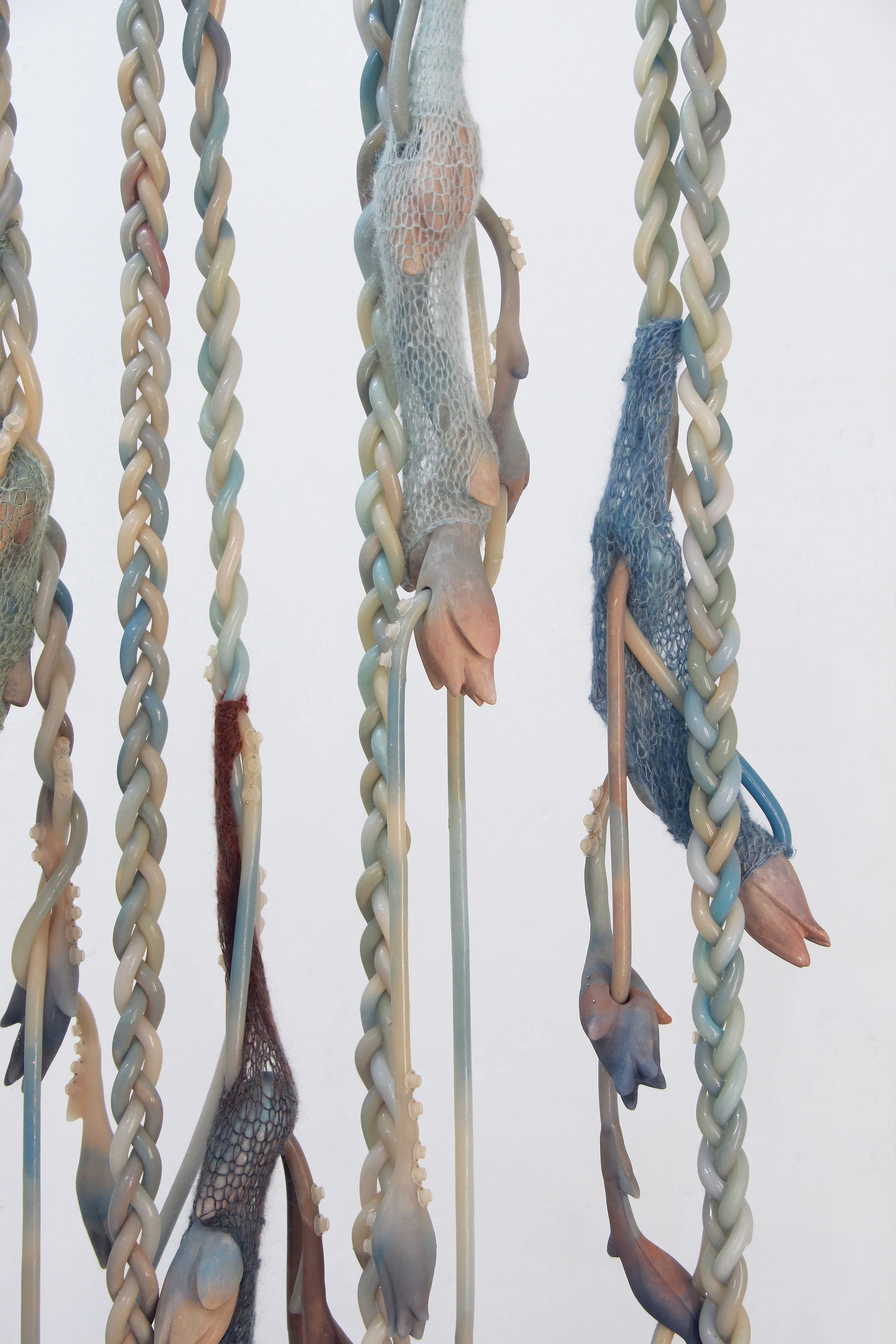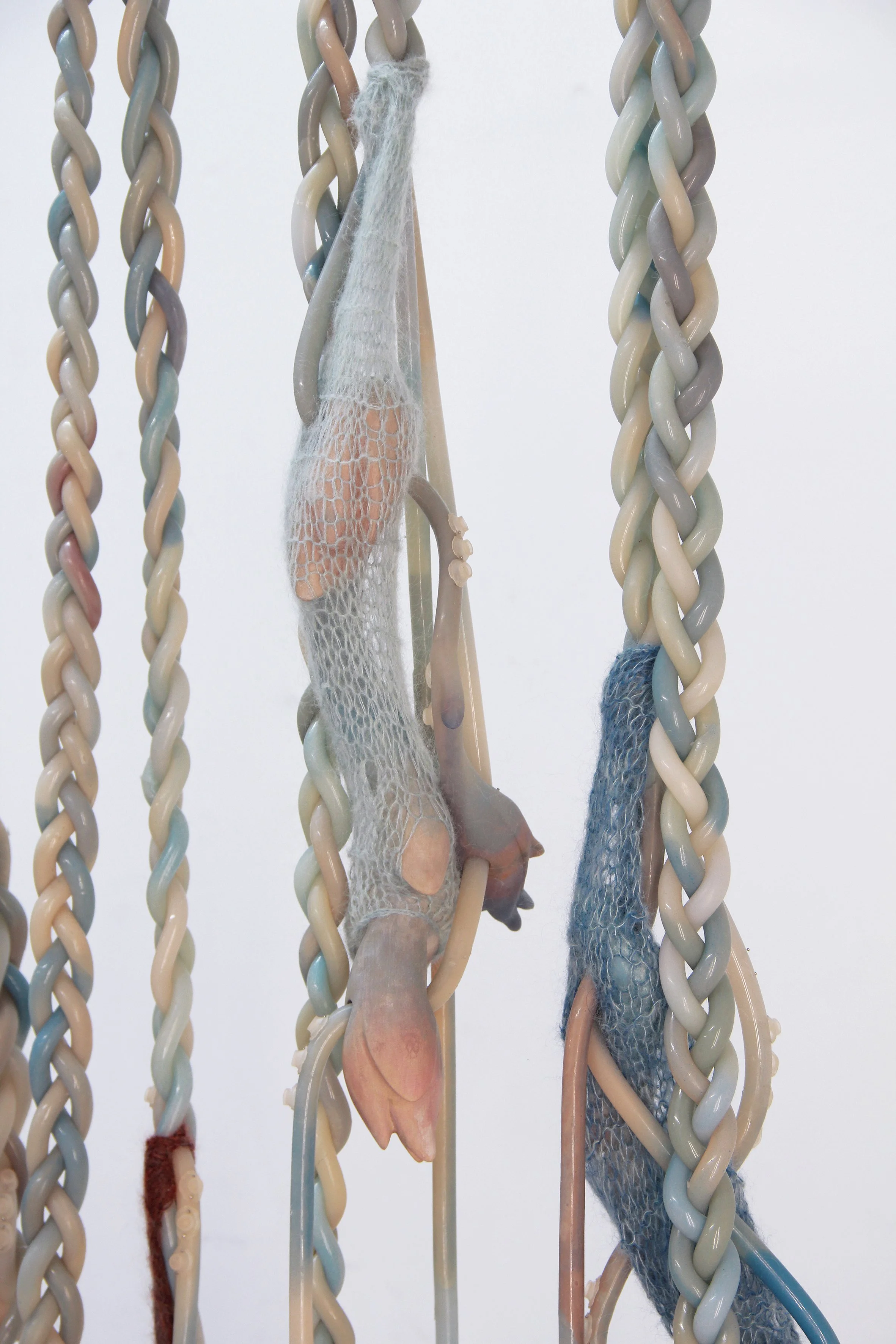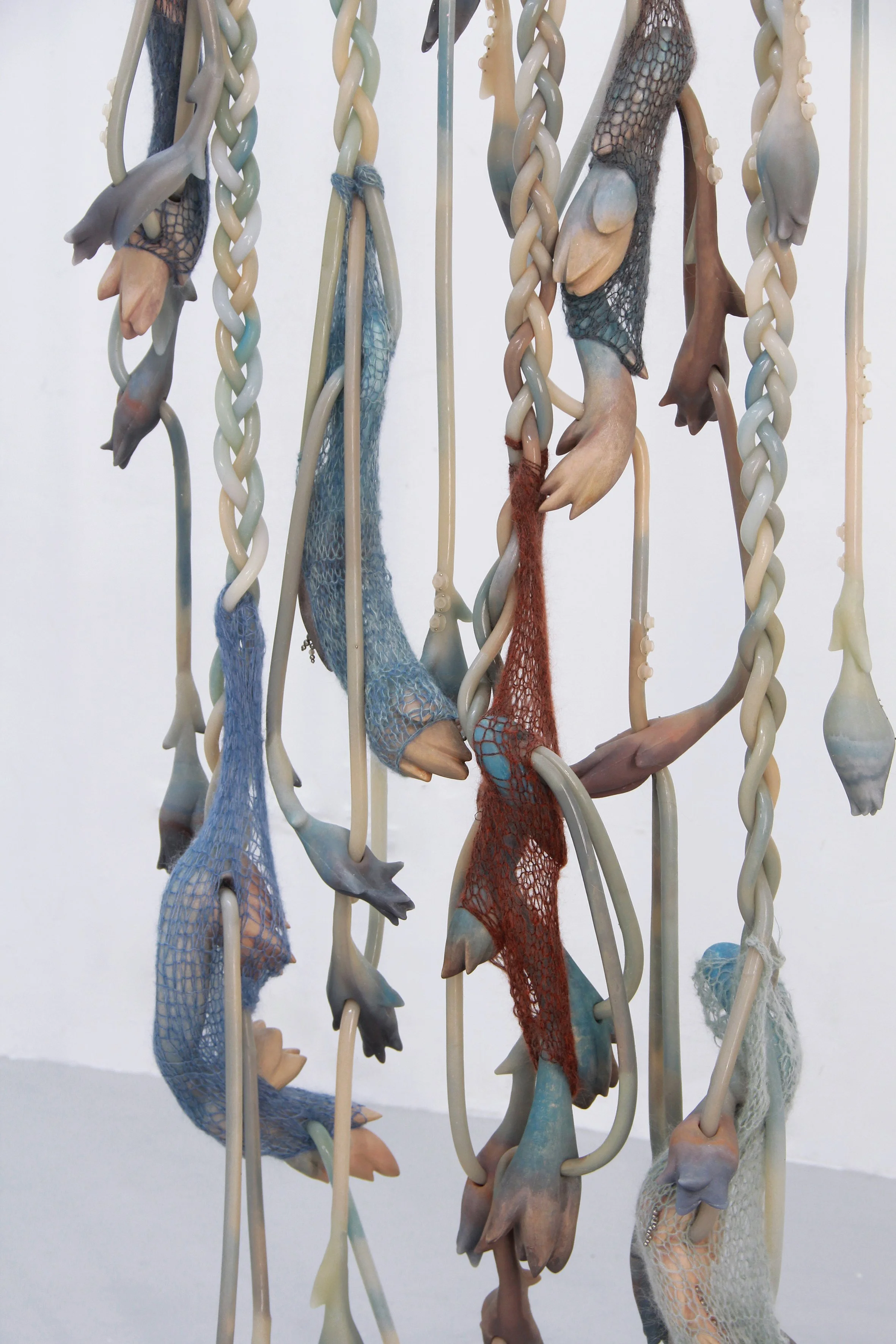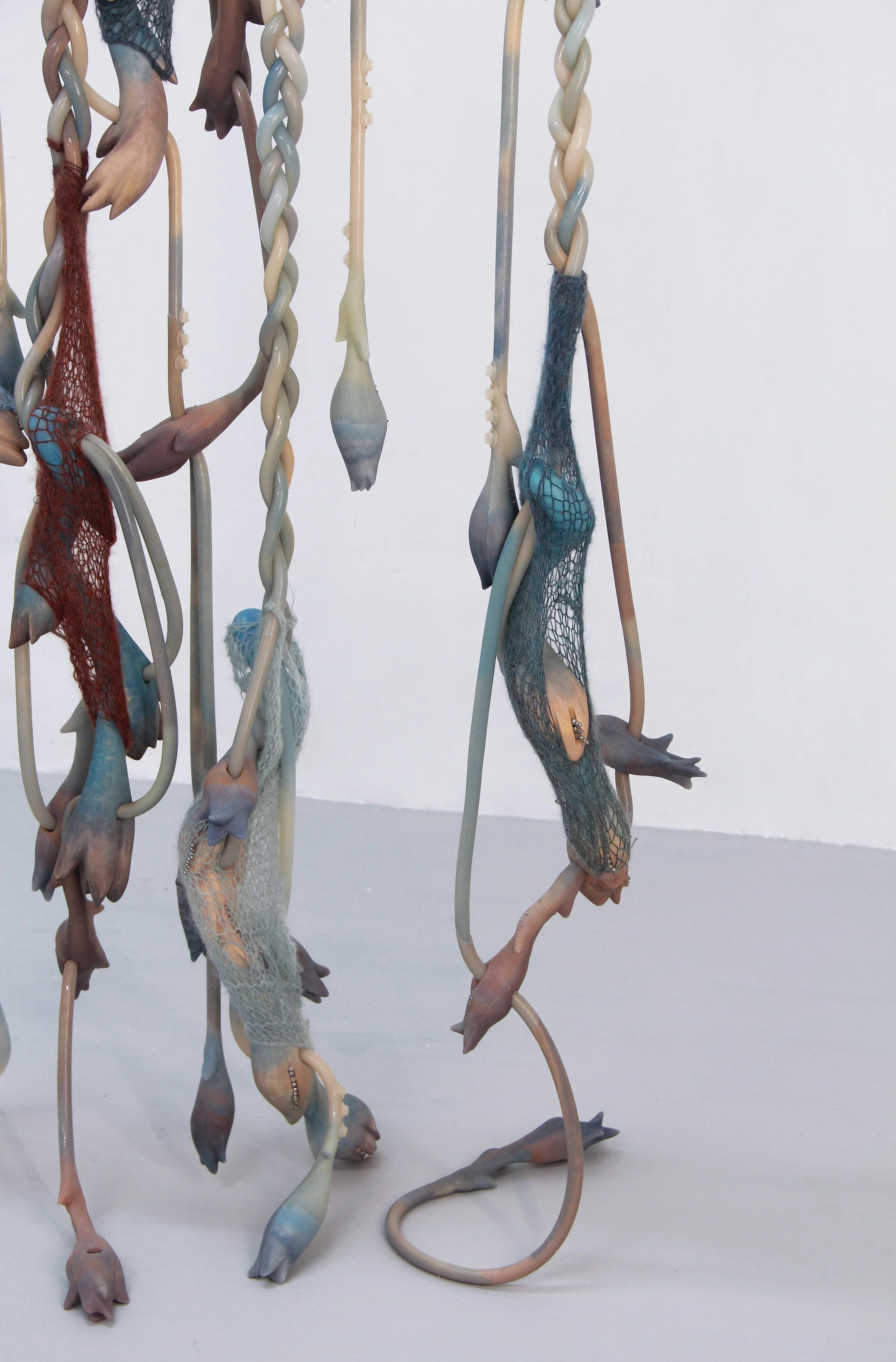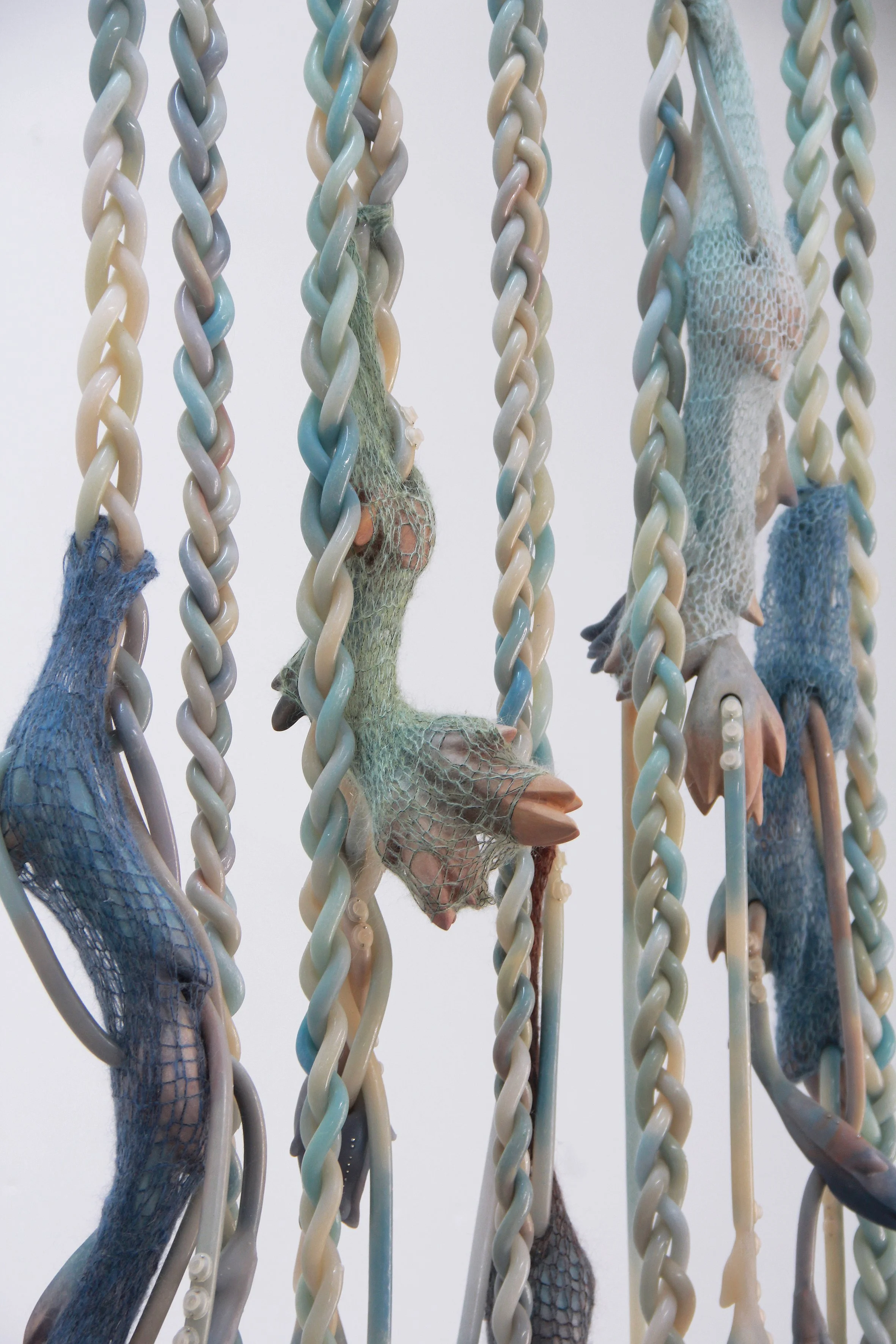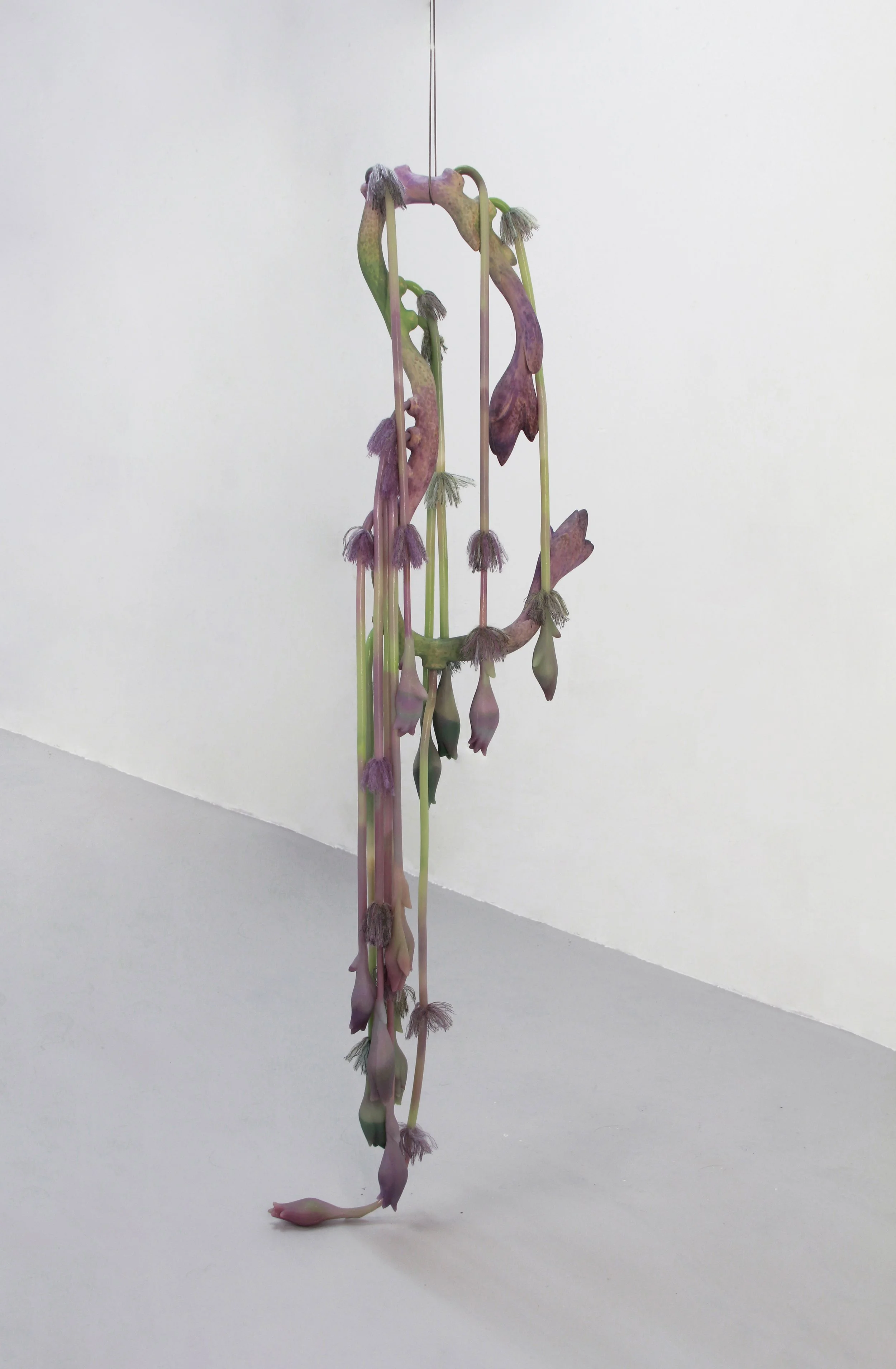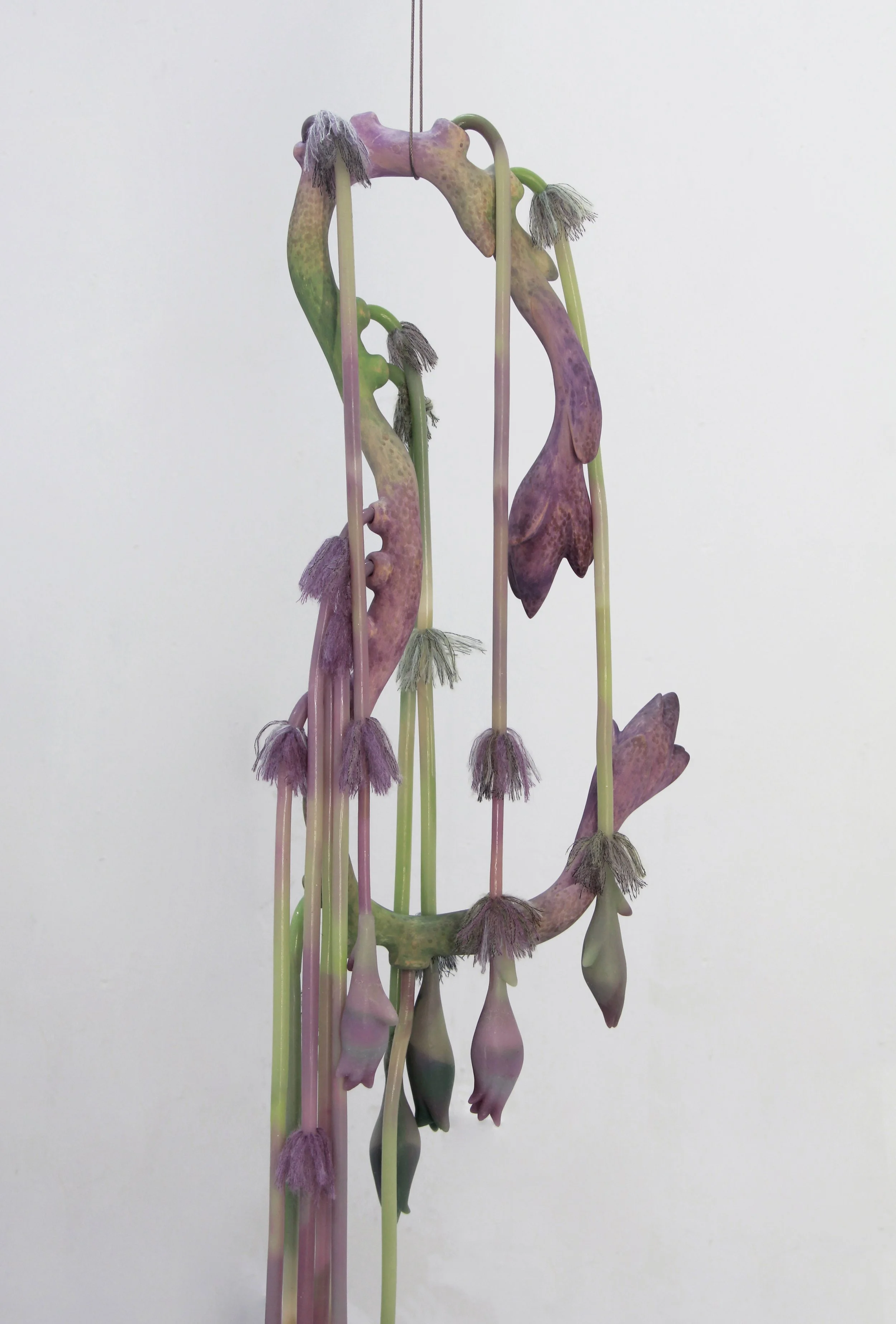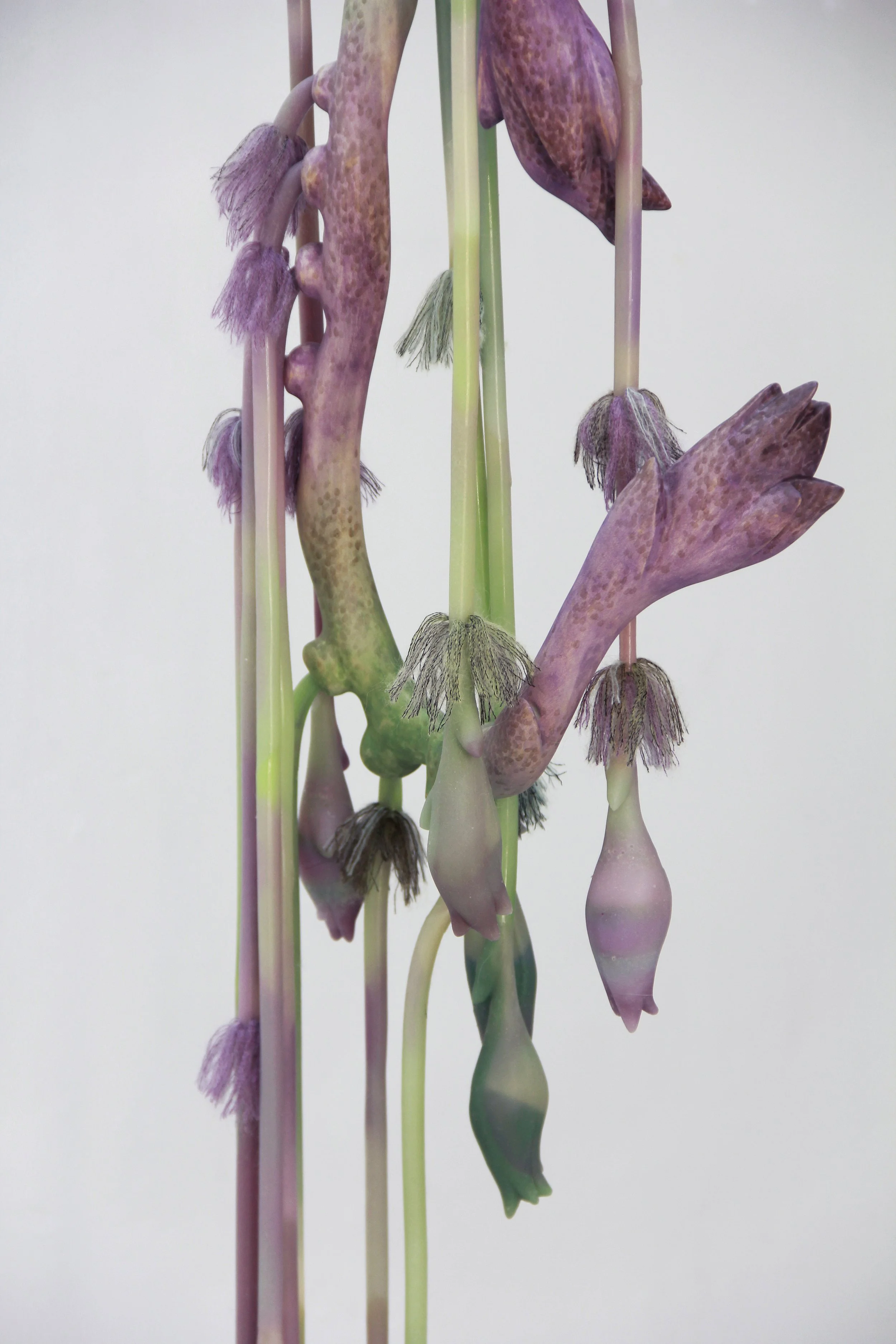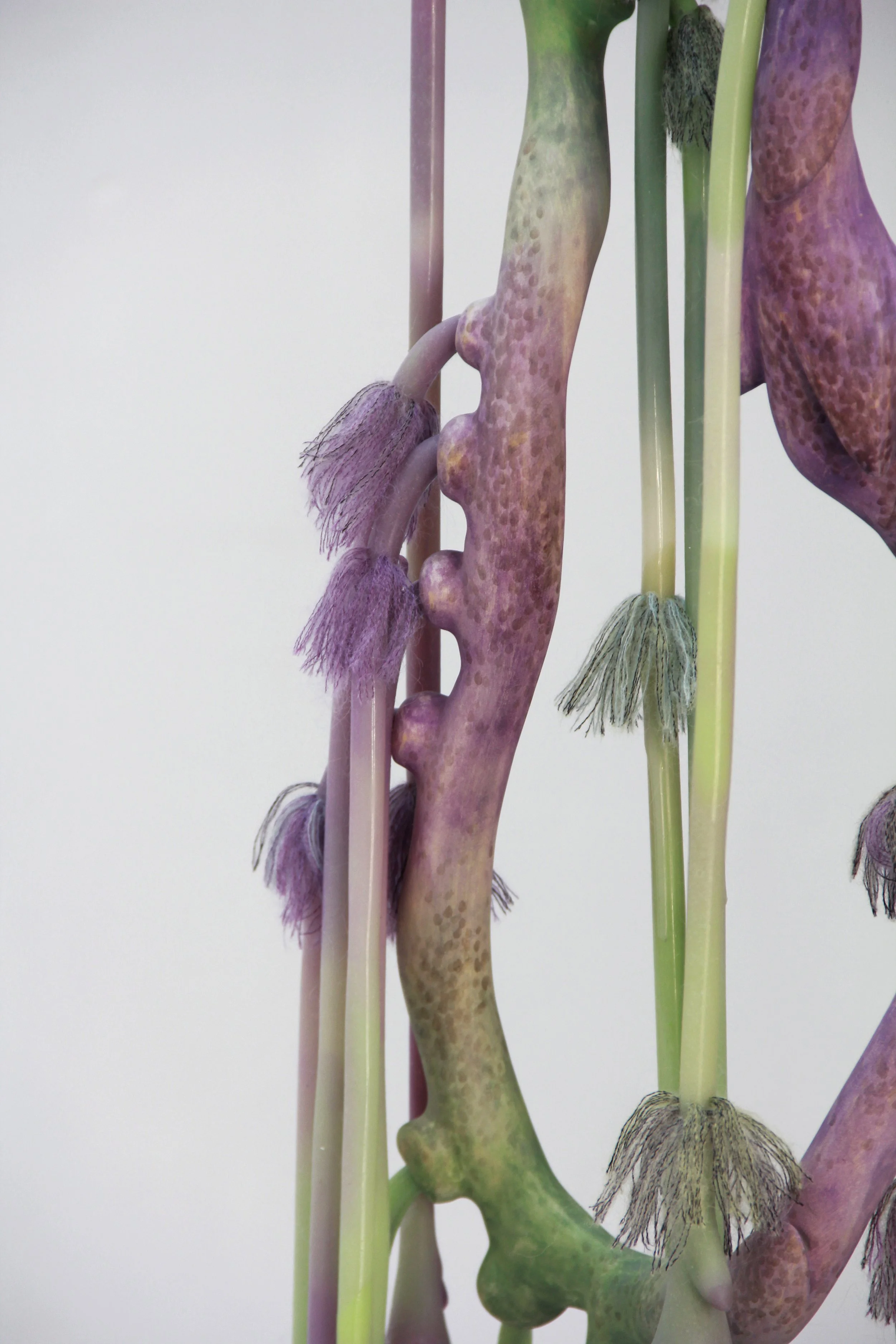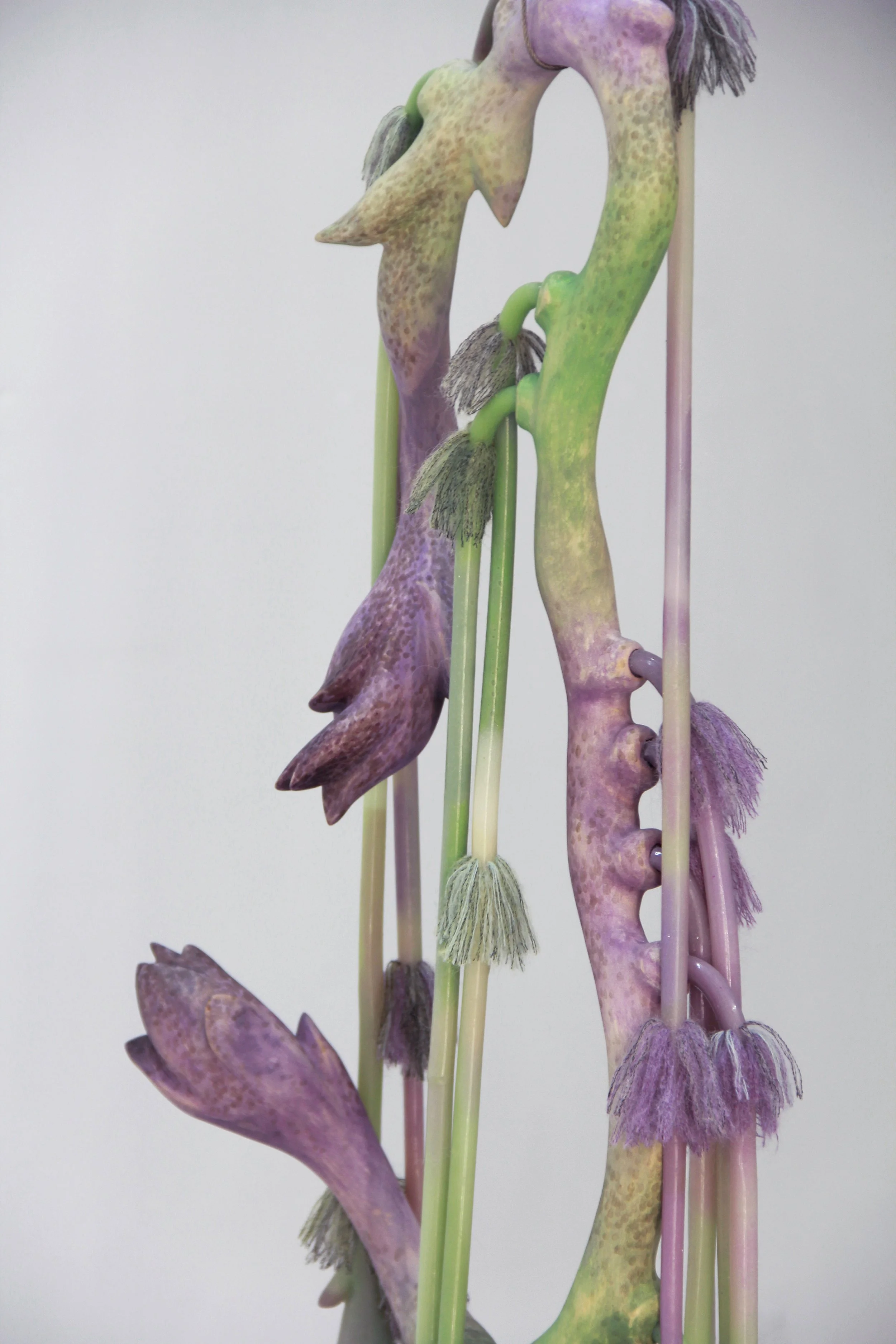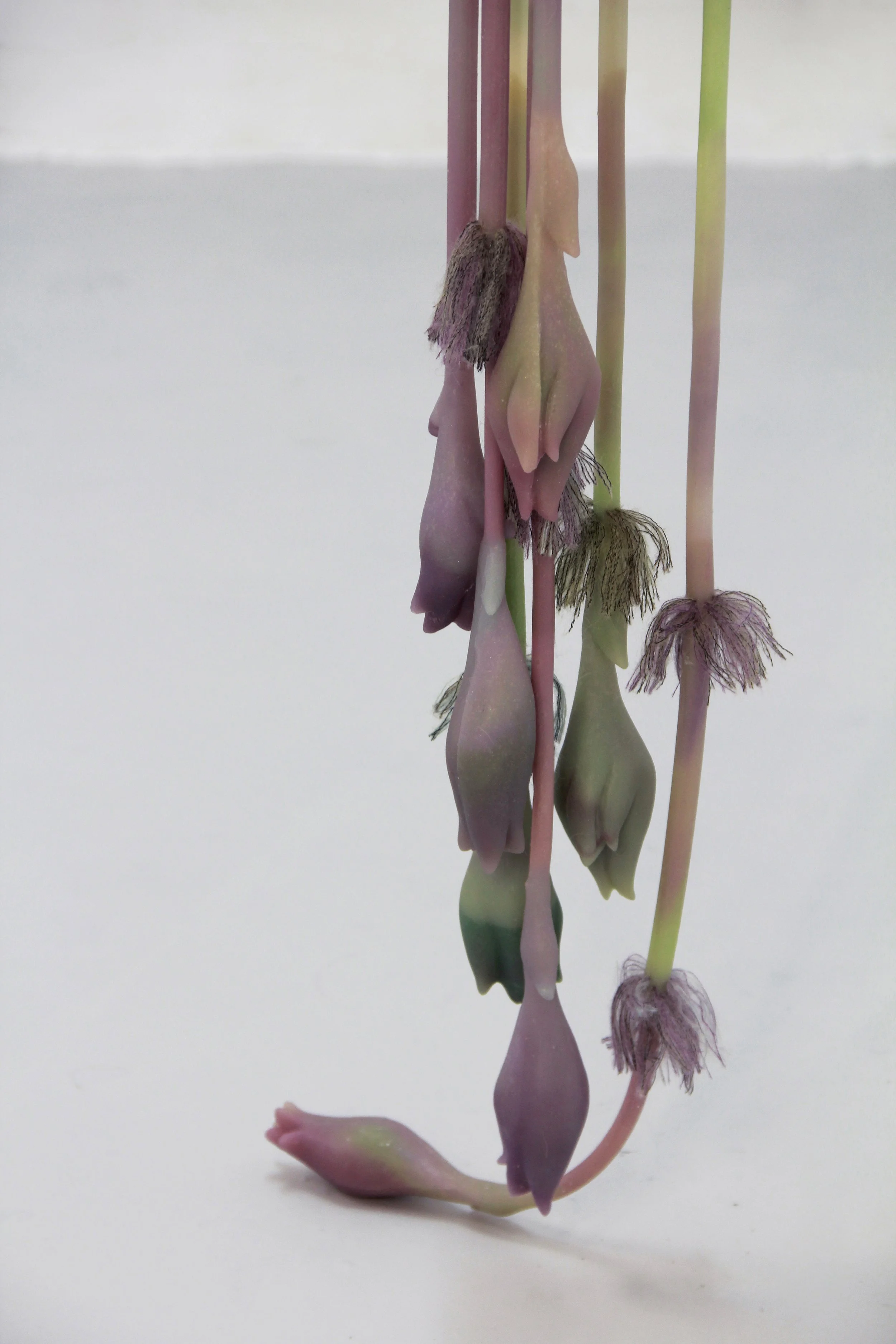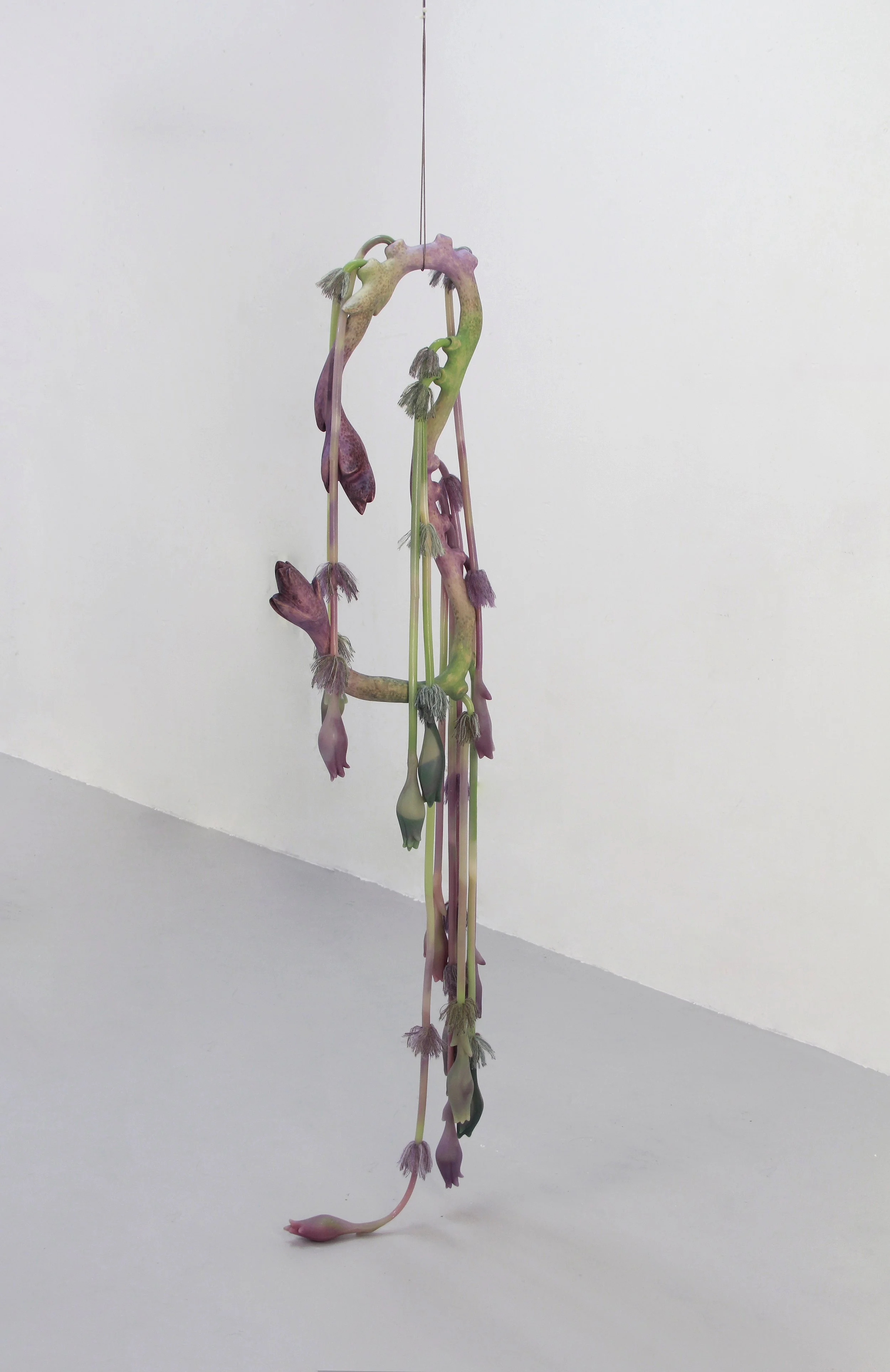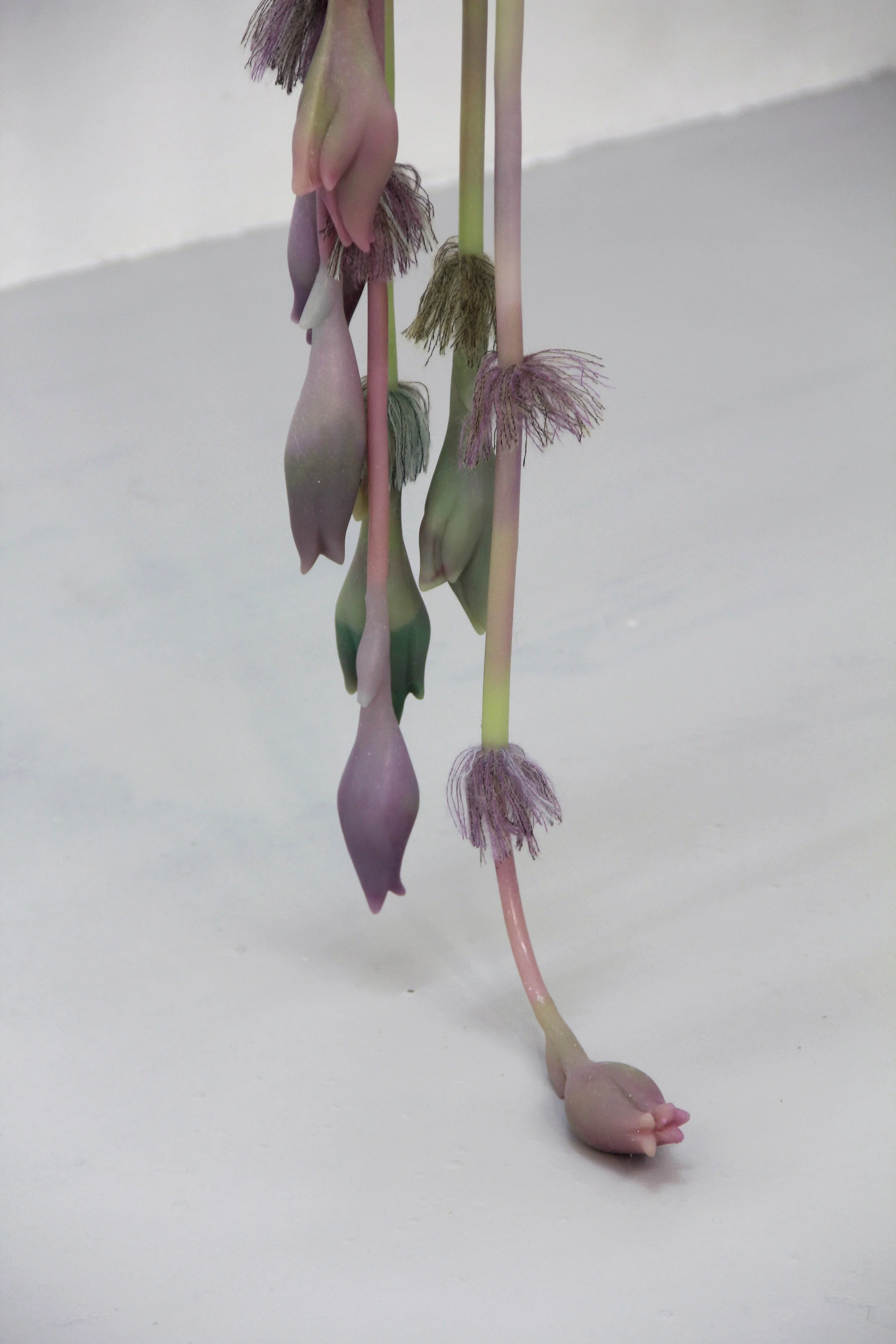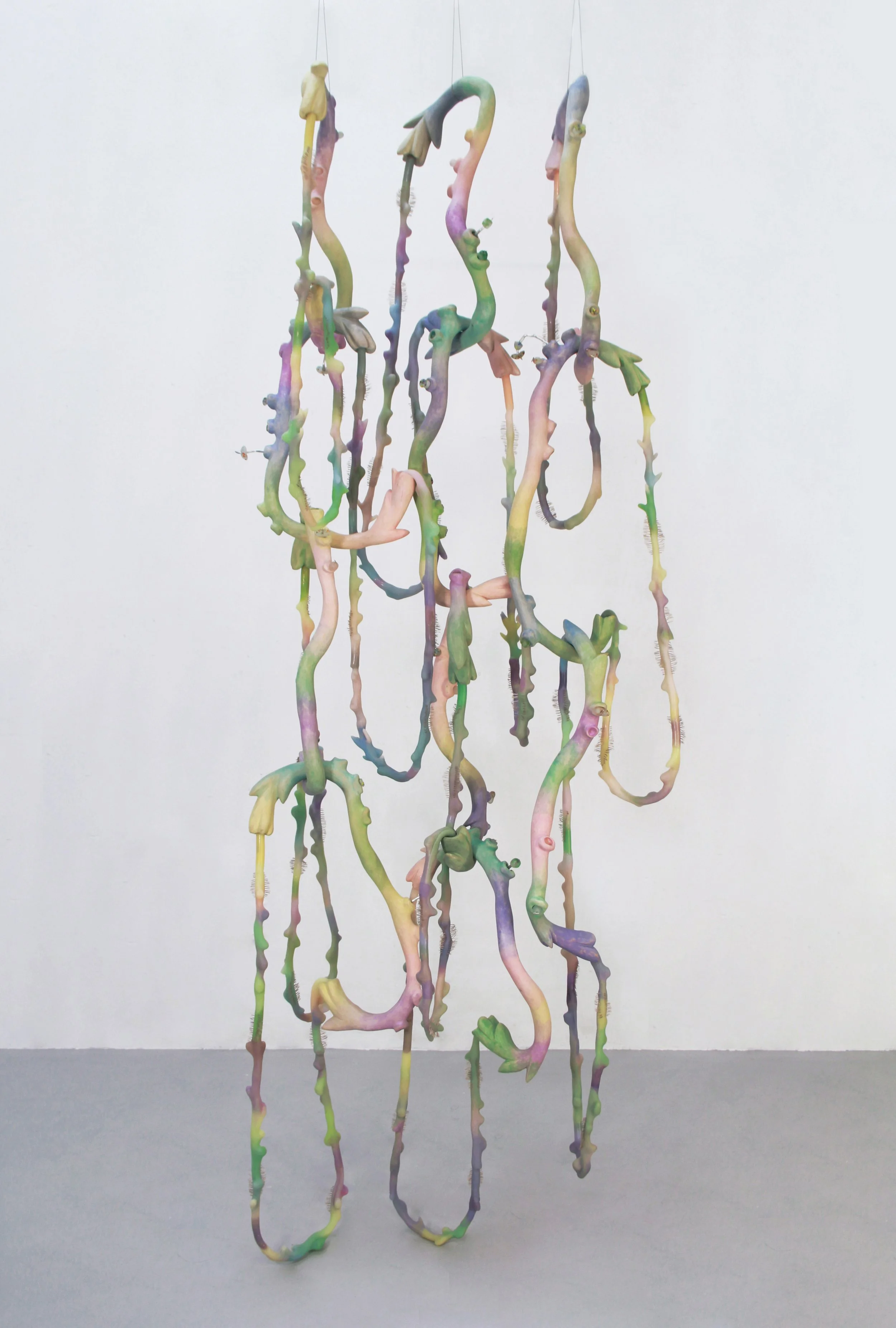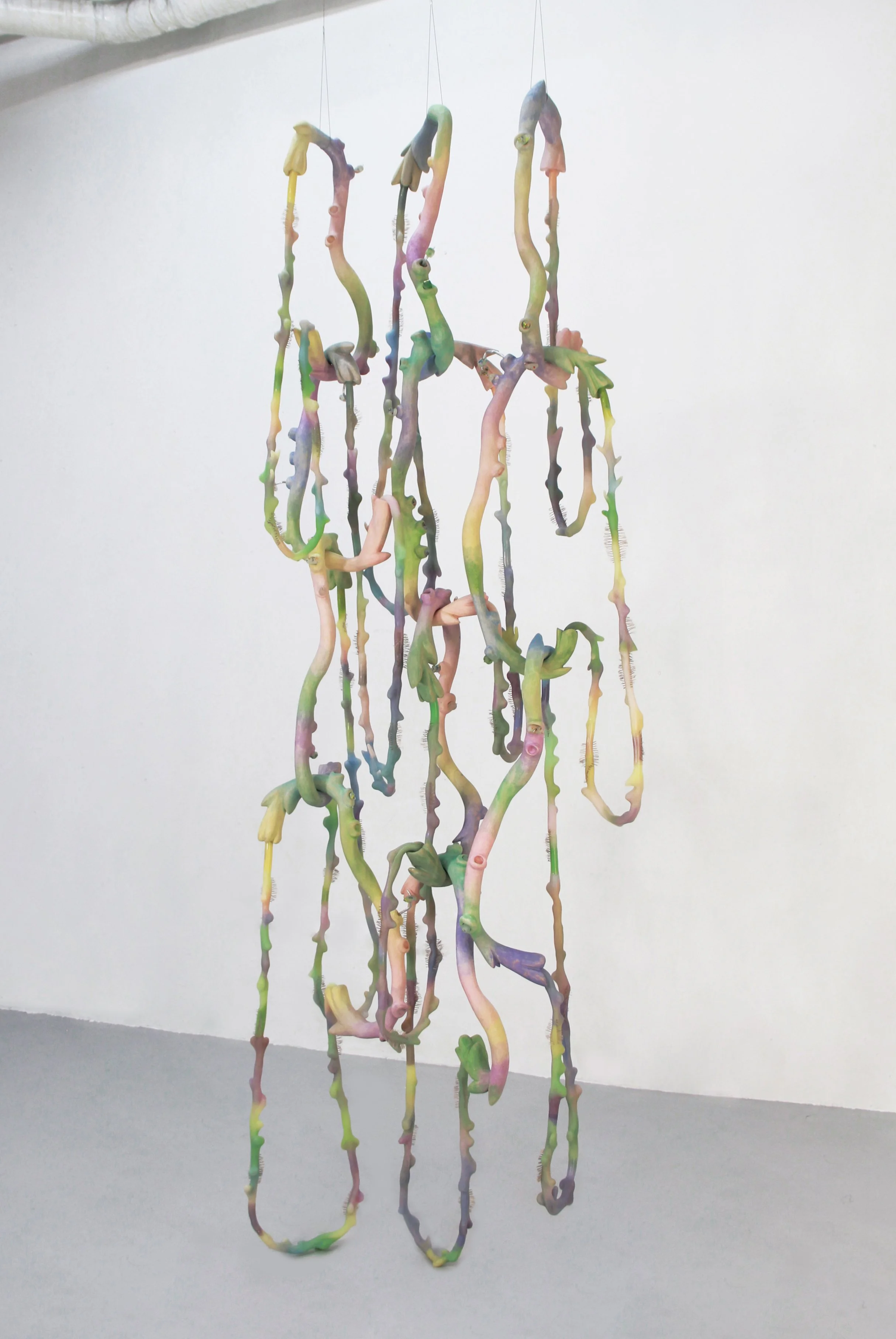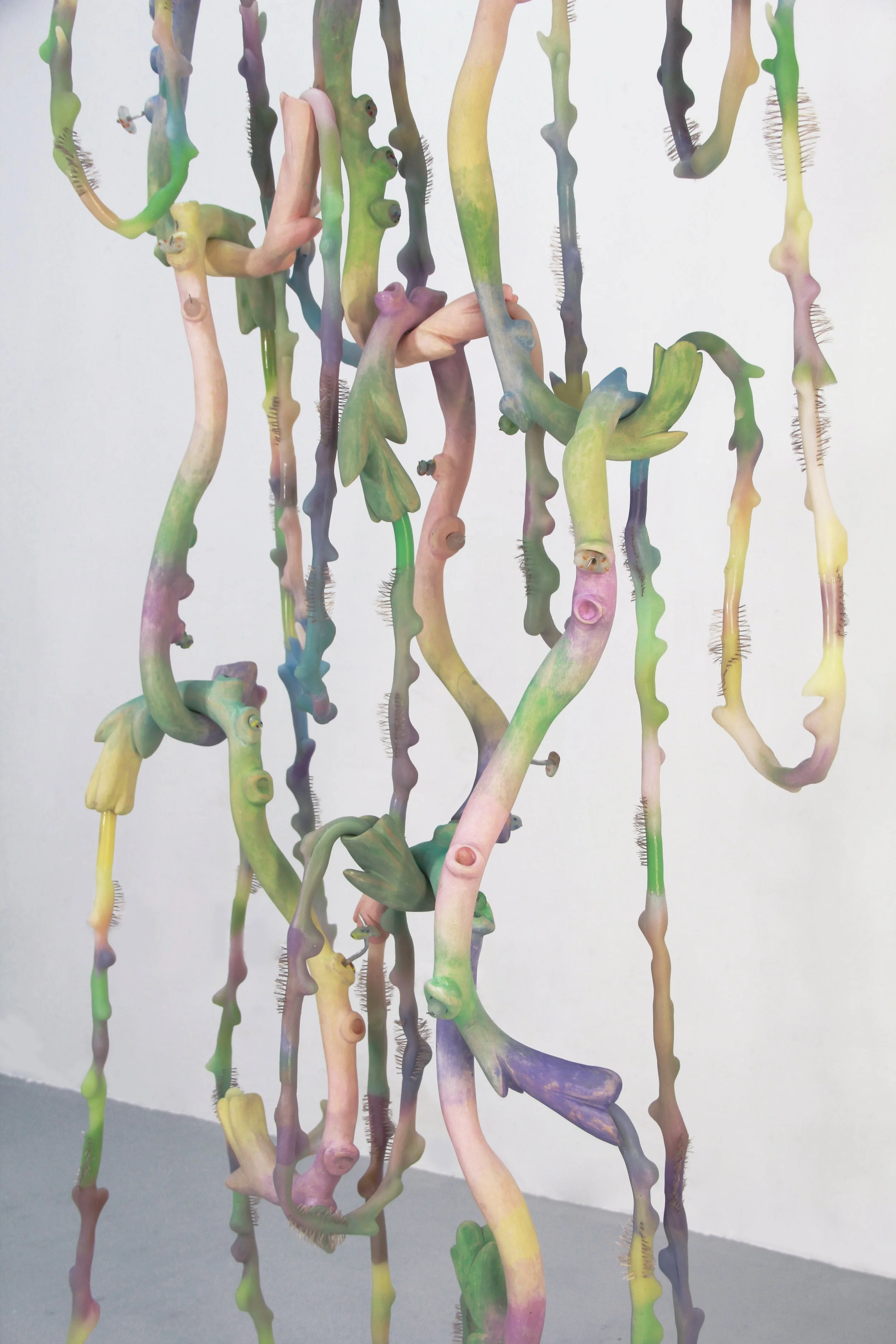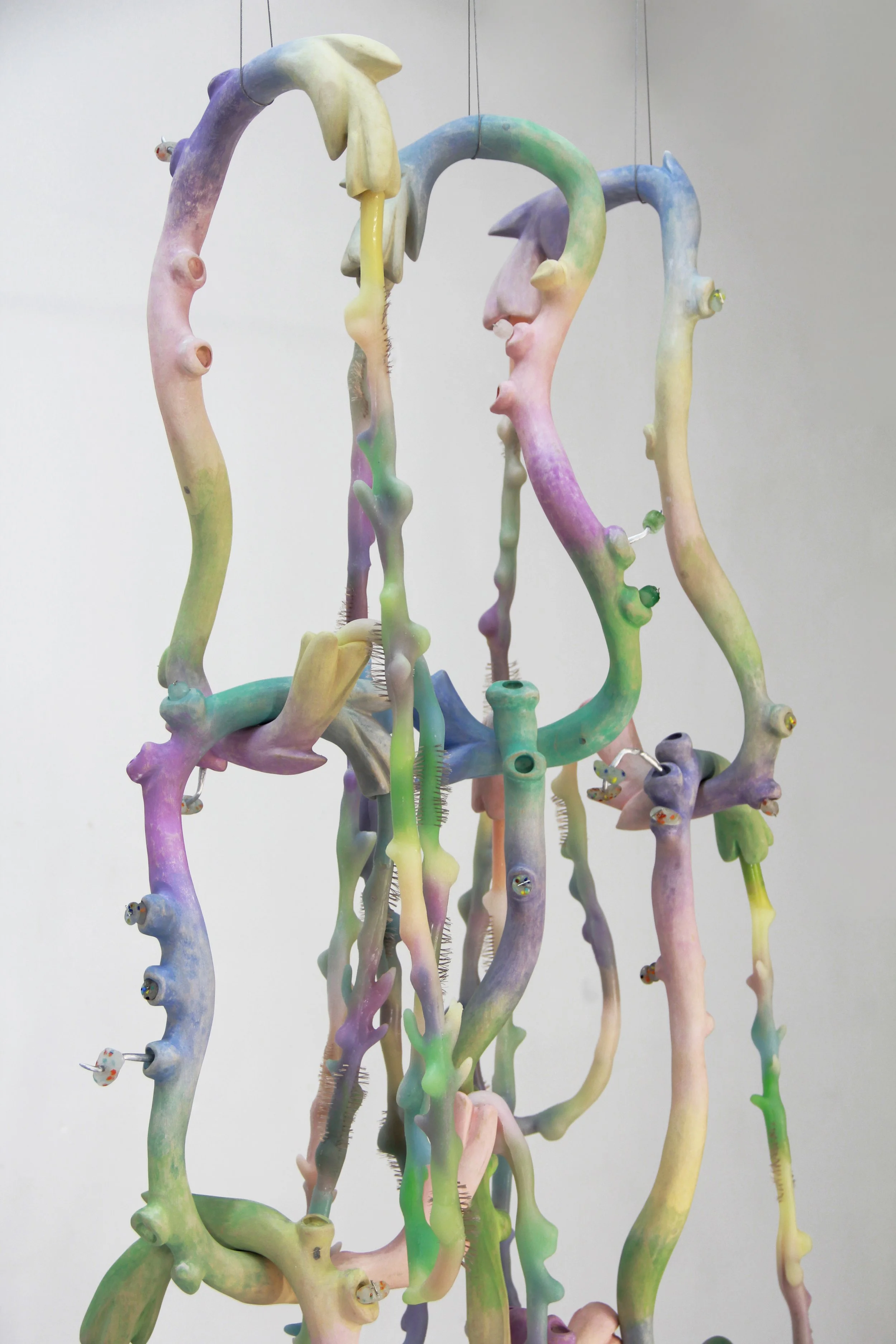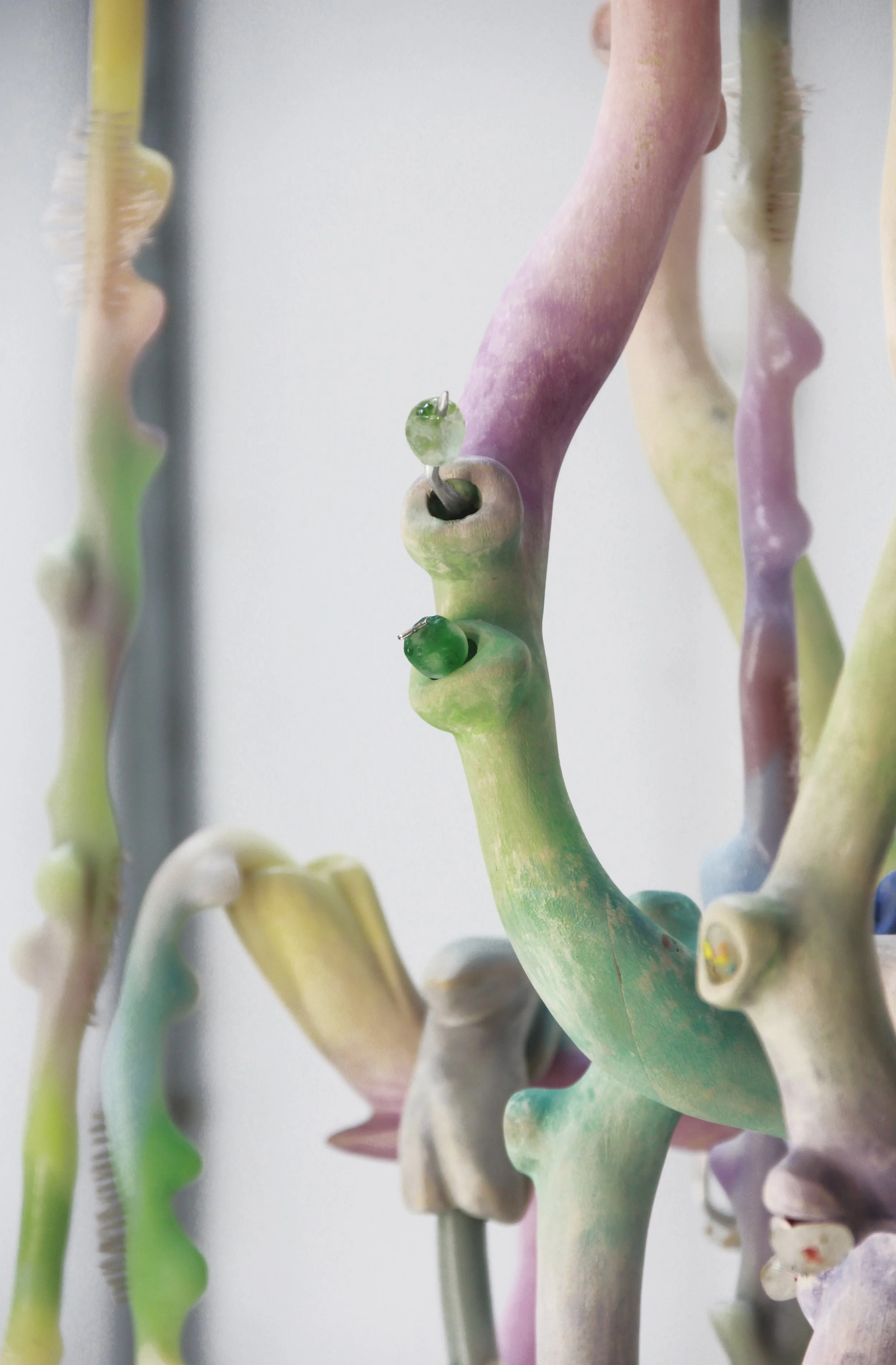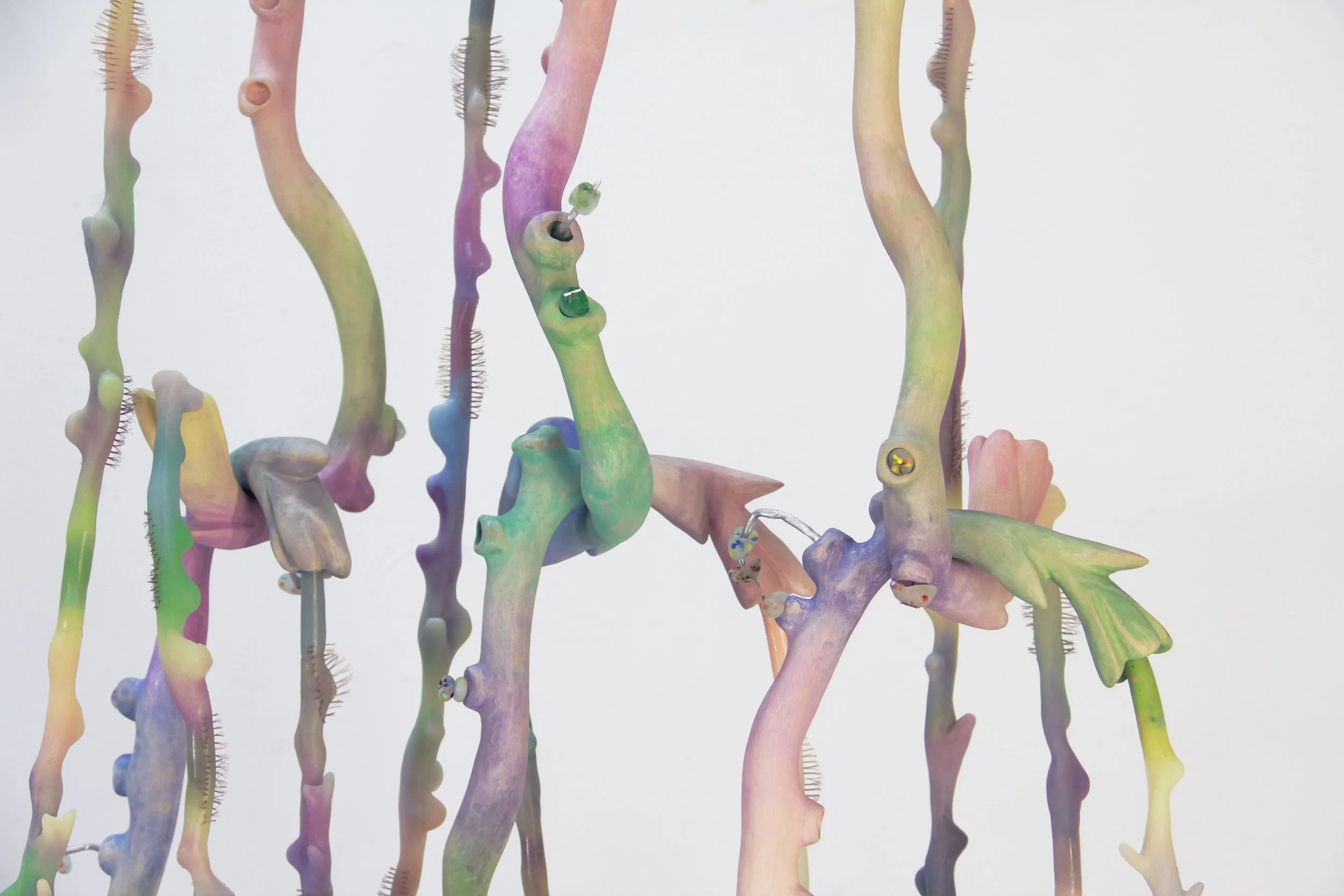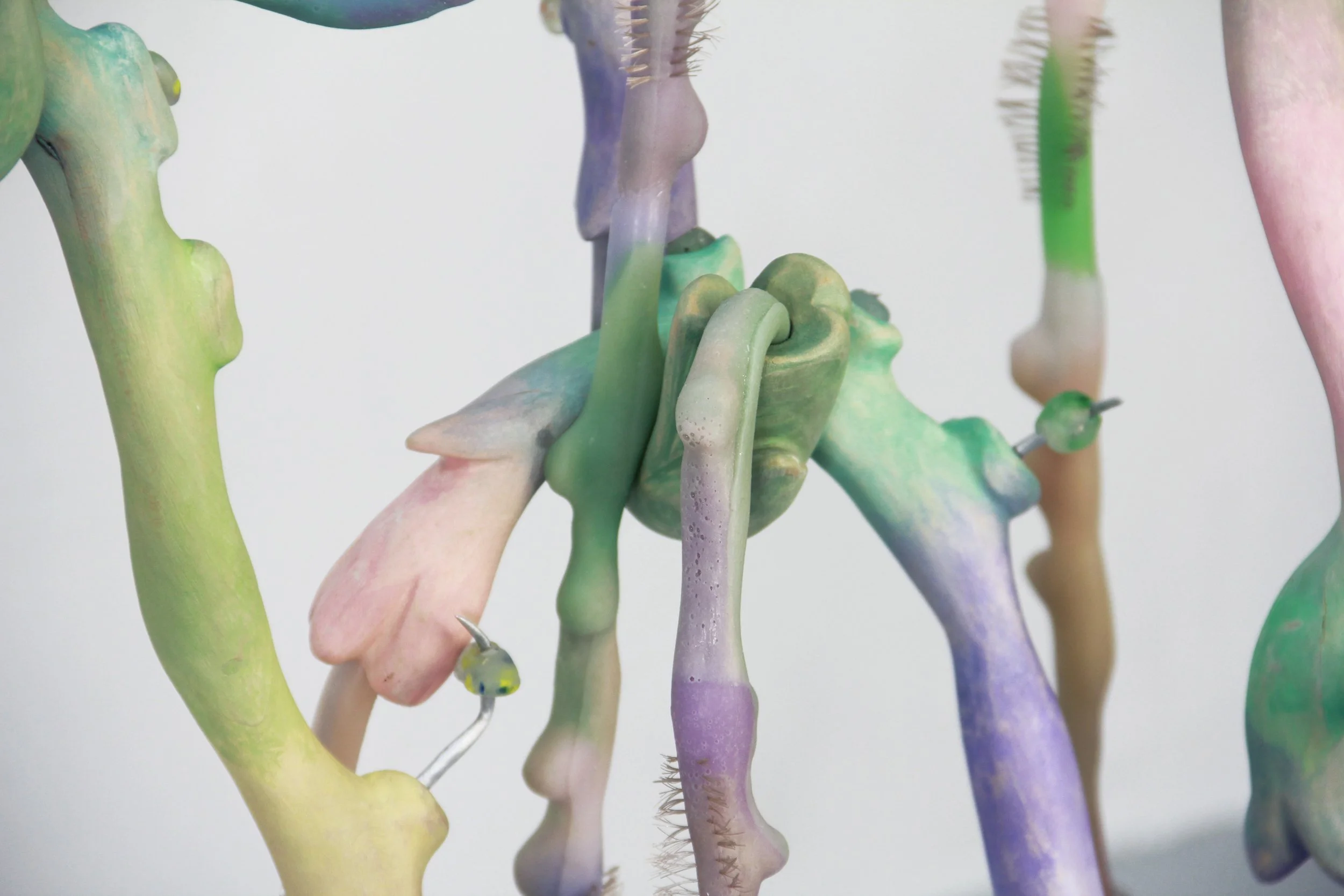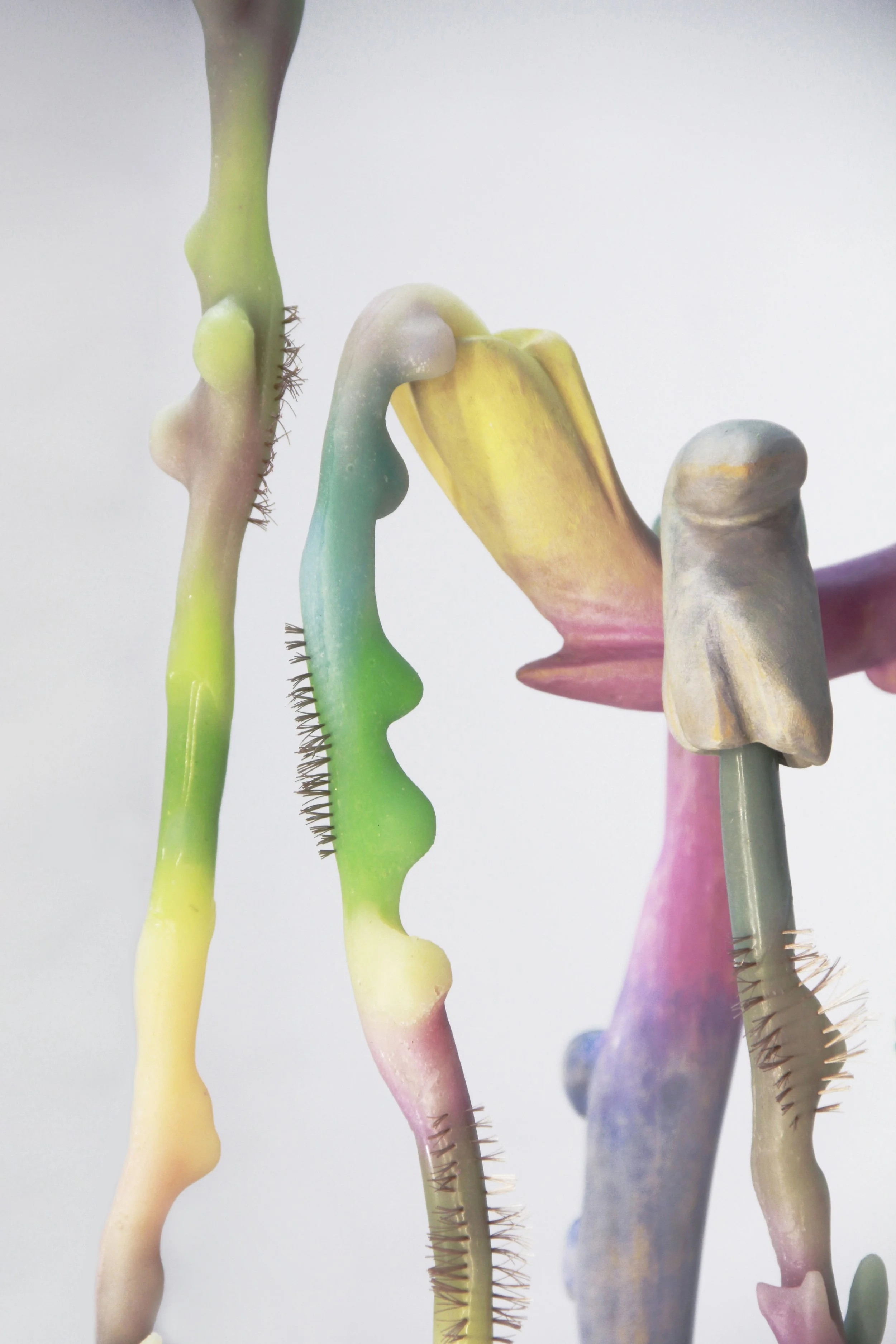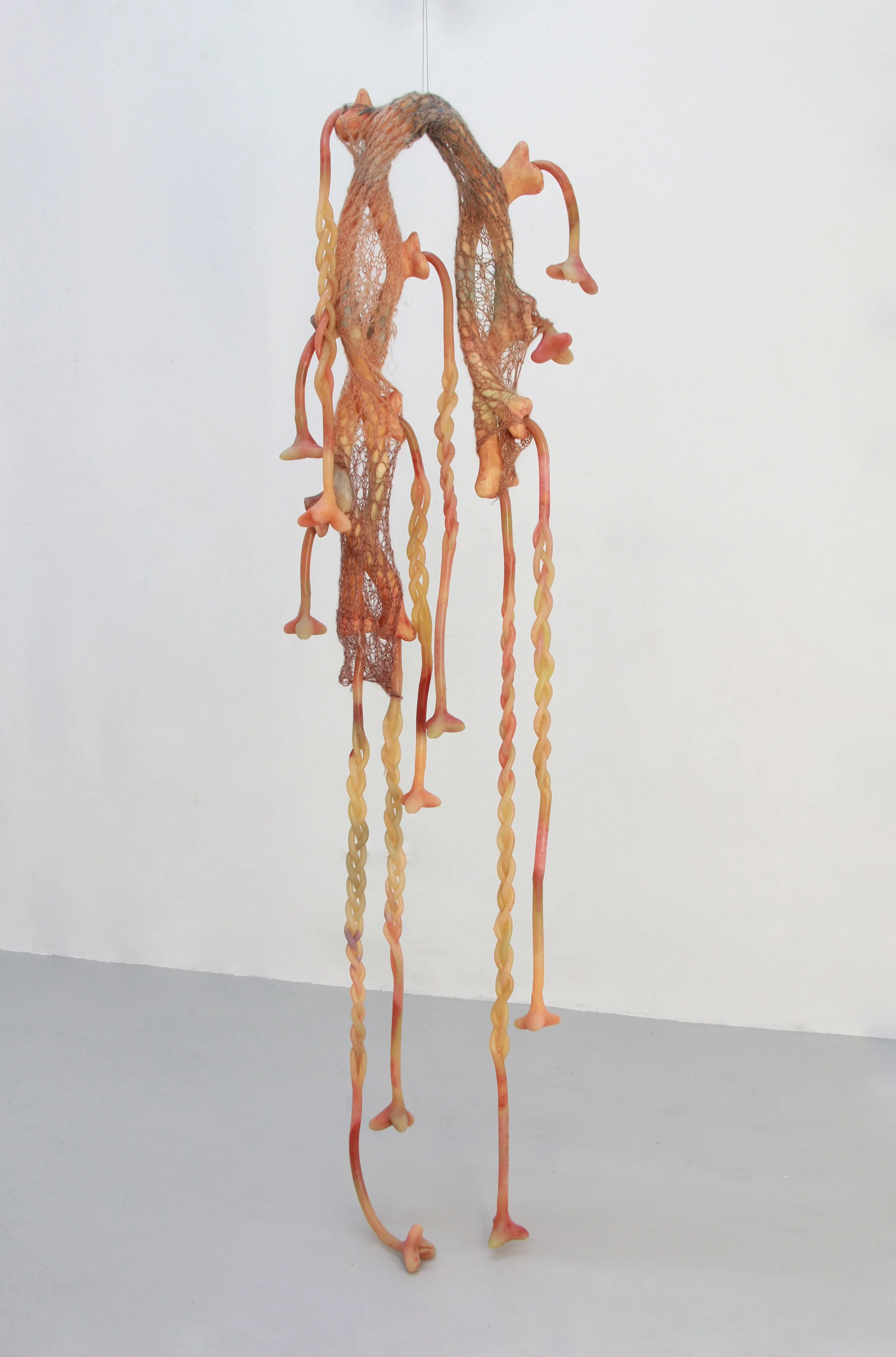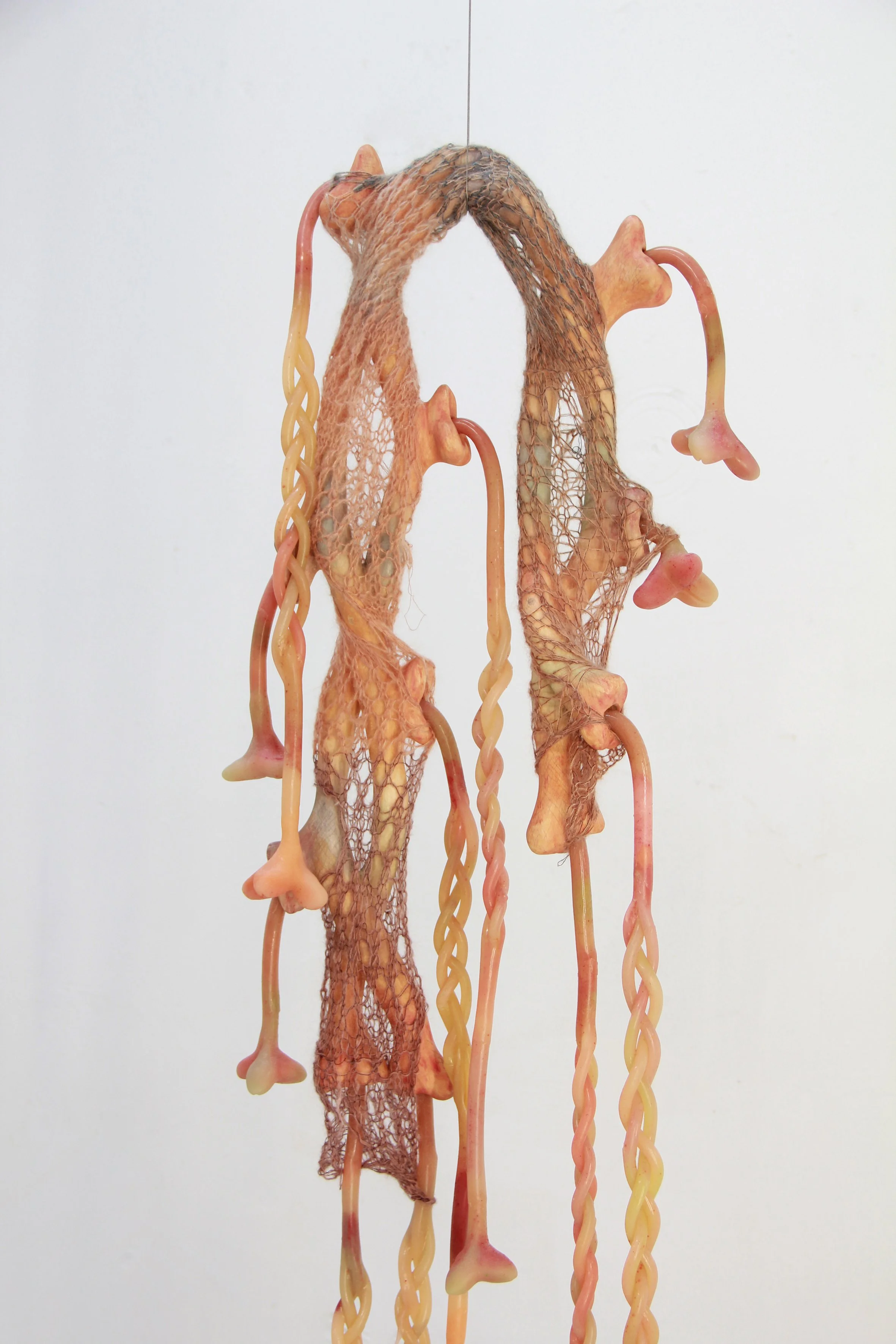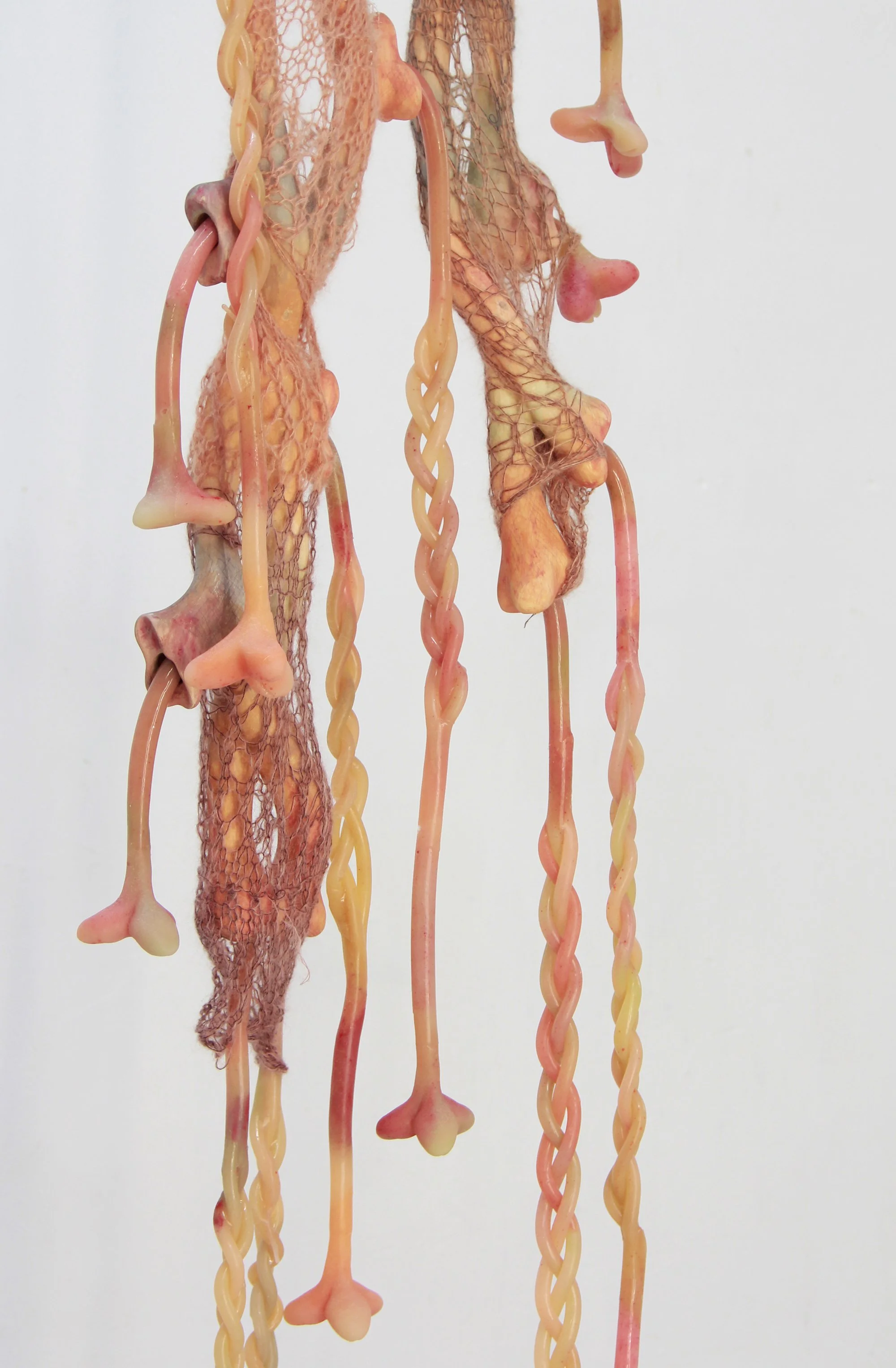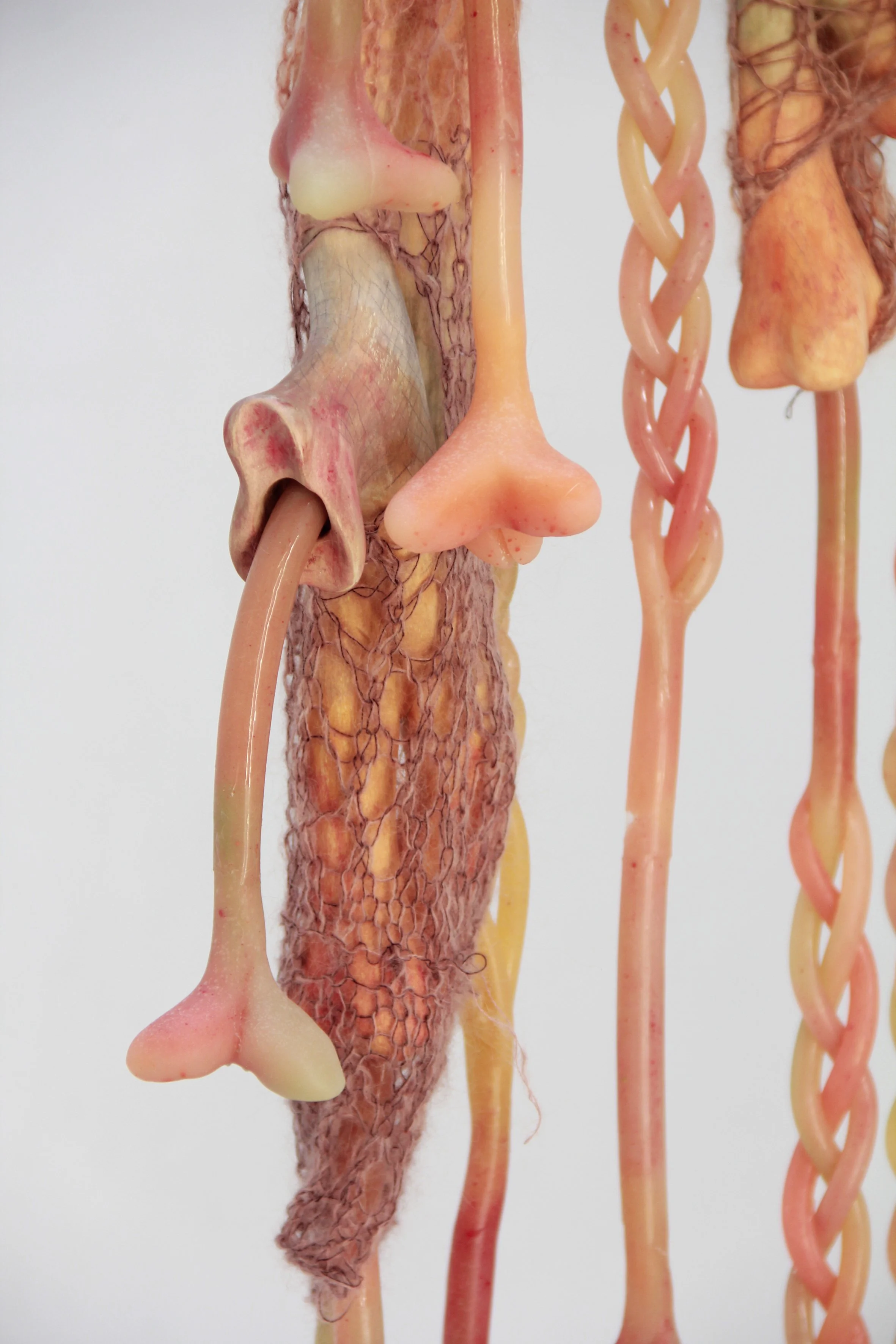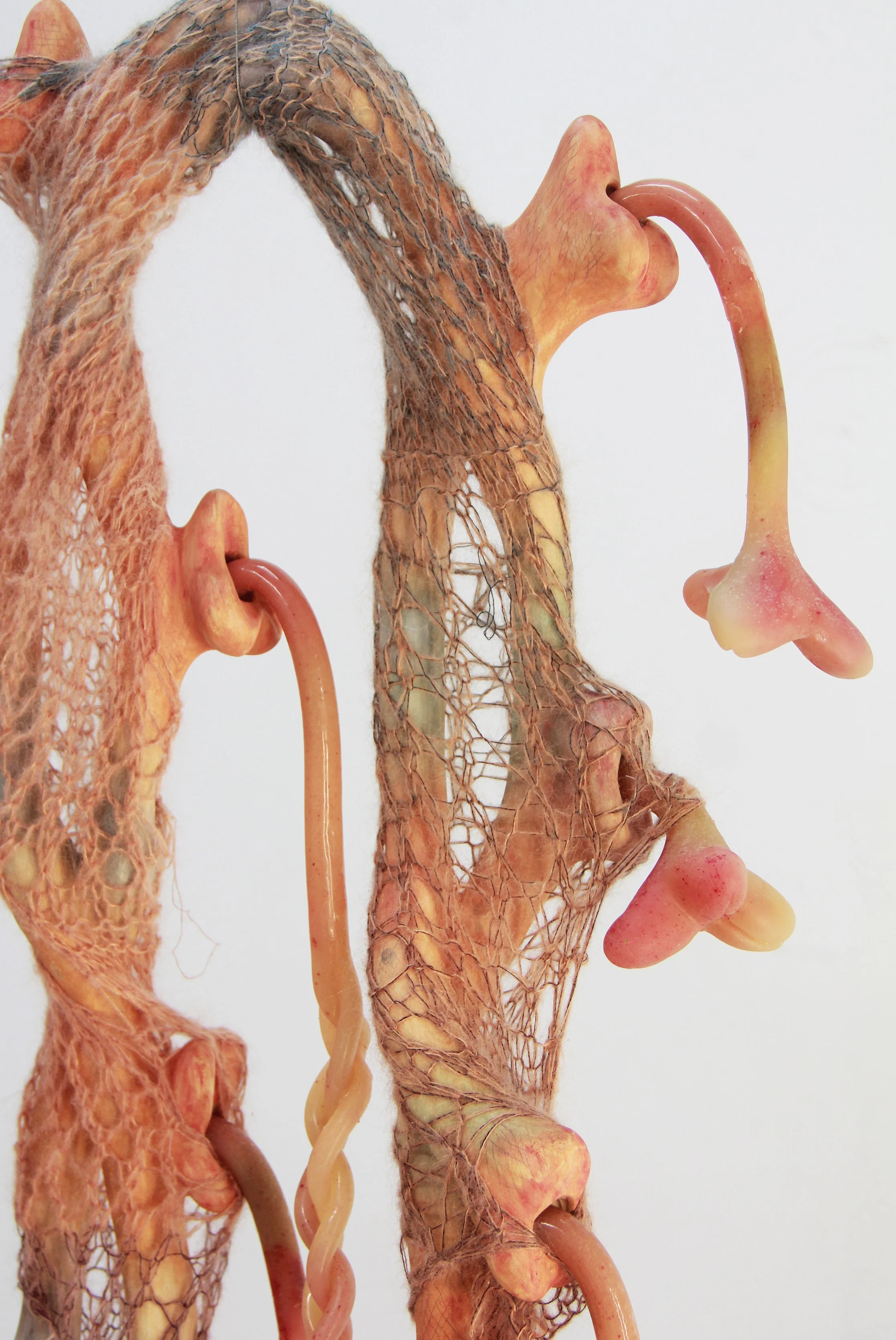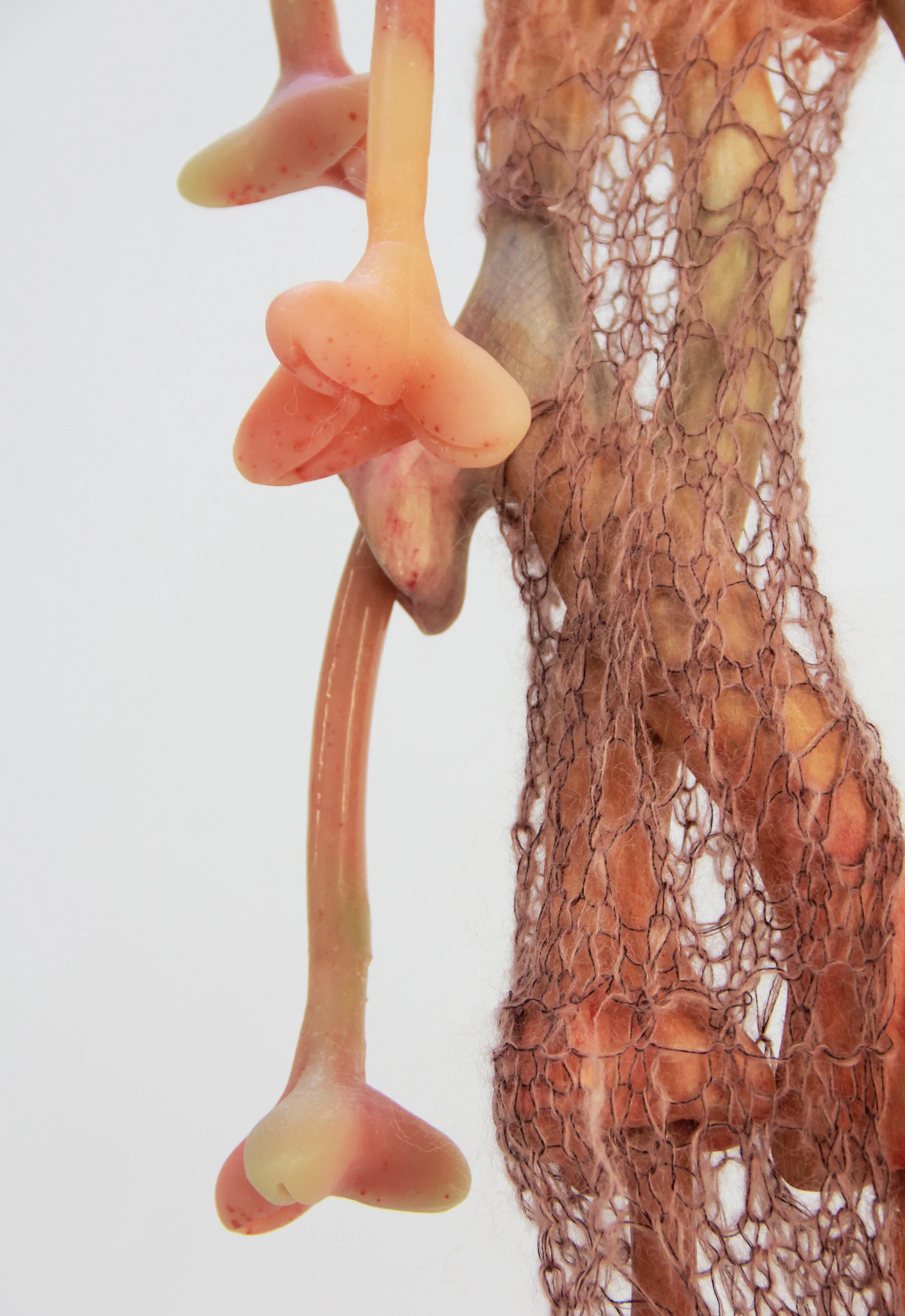Weaving Practice 编织练习
Installation View, Art Art Basel Hong Kong, Booth 1C34, 2025
Studio Gallery is pleased to present Yuyu Wang’s solo project “Weaving Practice.” The exhibition features a series of new works inspired by her observation and contemplation of non-human lifeforms that coinhabit with humans in urban environments—such as parasitic plants, insects, and reptiles. Included are four sculptures and five archival cabinets comprising paintings, collages, and small-scale sculptures.
The process of weaving involves the overlapping and interlocking of materials. It may begin with a fixed method, yet new pathways can emerge by altering the sequence of materials along the way. Throughout this process, disruptions in the weaving pattern, omitted materials, or newly introduced elements contribute to an interlaced state of disorder. For Yuyu, the practice of weaving resembles an experiment in connection and collaboration.
Yuyu grew up in a residential compound near an airport in a northern city in China, surrounded by highways and wild fields. Those grasslands scattered with leftover materials from urban construction often served as playgrounds for her and her childhood companions. Now, her studio is also located on the outskirts of Shanghai, amidst wild greenery and farmland. The landscapes from her memory—where the urban fringe merges with nature—and the mixed sense of curiosity and intimacy she felt while observing insects and gathering plants, often resurface vividly in certain moments, growing increasingly textured and clear.
During the 2022 lockdown in Shanghai, she began paying more attention to the wild plants and insects in her studio’s courtyard. Gradually, she noticed parasitic relationships among certain plants, the processes of insect hatching and metamorphosis, and varying levels of activity among different organisms after rain or on sunny days. From these observations emerged a sense of mutual understanding among forms of life—a form of companionship.
If her earlier embodied practice focused primarily on conveying human bodily sensation, her recent explorations—including the upcoming project “Weaving Practice”—shift attention toward observing these non-human forms of life with which we coinhabit in empathy. Their living environments, morphologies, and subtle changes during growth are what she continuously traces.
The presence and growth of these organisms often go unnoticed at first, yet they may suddenly appear on a striking scale at a certain moment—as if reminding us of the immense energy of nature, concealed behind the order of human civilization, always ready to spill forth. They may possess unique survival skills or exhibit seemingly chaotic behaviors, prompting us to remain vigilance of the very notion of order.
The forms of the works derive from organs and their appendages—such as haustoria, pistil, epidermis, skin, and secretions—which serve functions like contact with the external world, multiplication, information exchange, or nutrient absorption. Through details in form and material, each piece intertwines with the others like vines, weaving together and forming a symbiotic landscape.
This project is dedicated to my mother—an important presence both in my life and throughout this exhibition.
Haustorium: Leaching , 2025, Dyed basswood, silicone, watercolor, acrylic, mohair, silk, agate beads, steel beads, shell, stainless steel, 210(h) x 90(w) x 15(d) cm
Haustorium: Feeding , 2025, Dyed basswood, silicone, watercolor, acrylic, mohair, silk, stainless steel, 160(h) x 35(w) x 30(d) cm
Left the Maternal Body, 2025, Dyed basswood, silicone, watercolor, glass, aluminum, nylon, stainless steel, 200(h) x 70(w) x 30(d) cm
Pistil Vortex , 2025, Dyed basswood, silicone, watercolor, acrylic, mohair, silk, nylon, stainless steel, 160(h)x40(w)x30(d) cm
